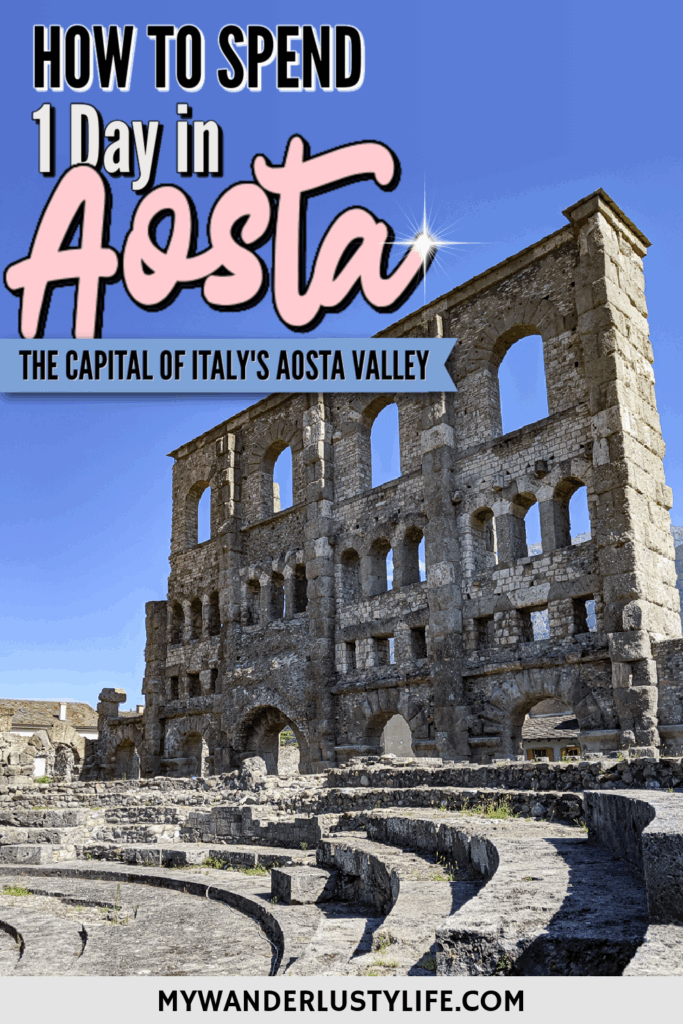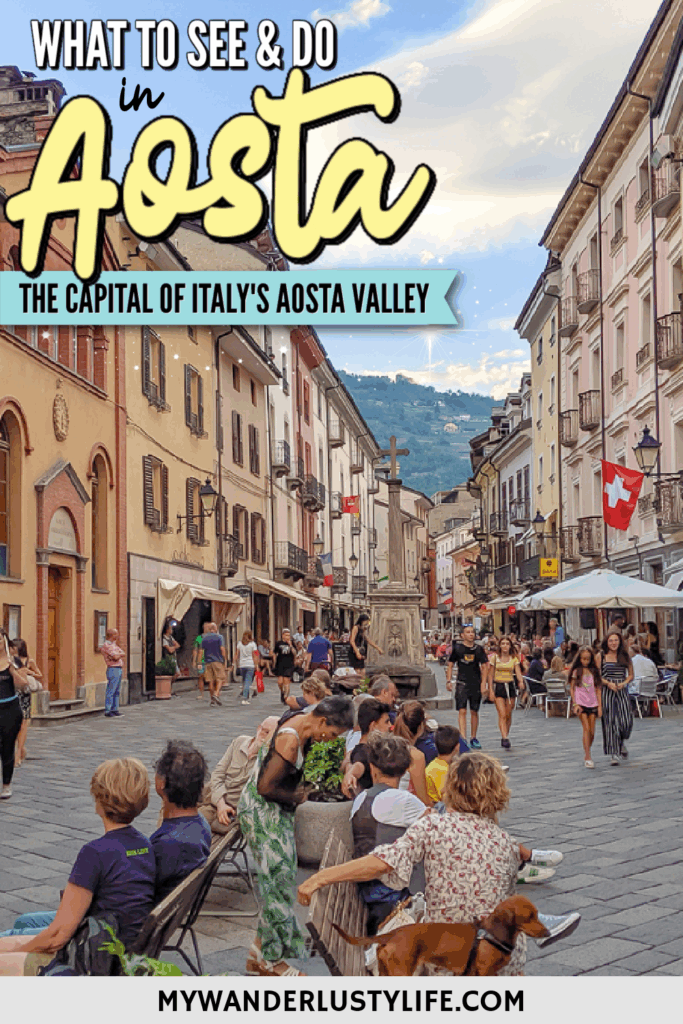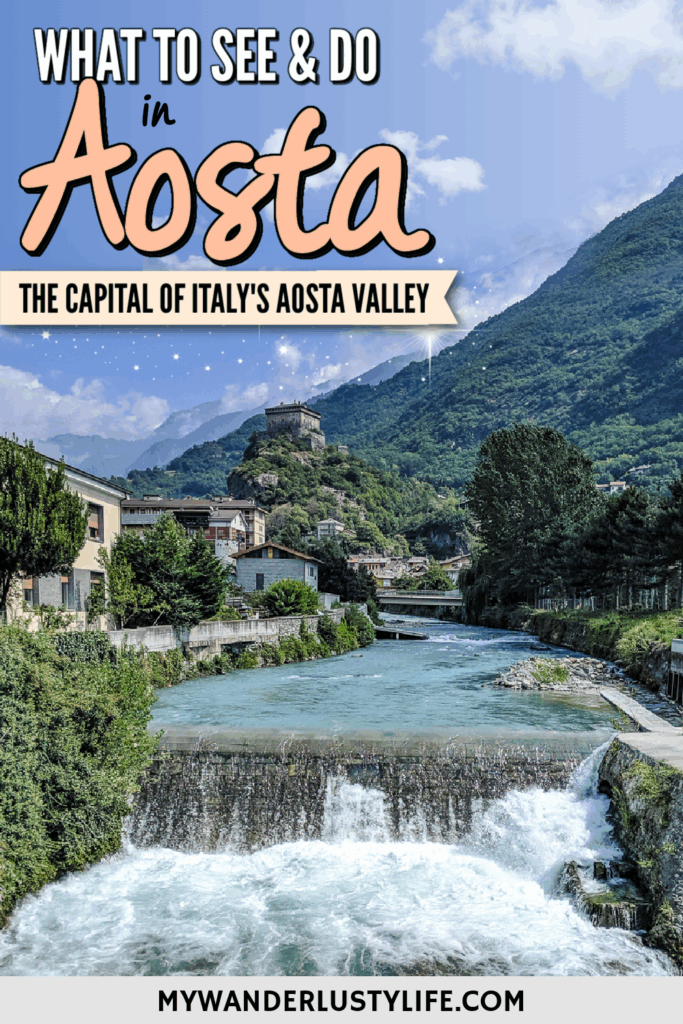I never planned to spend 1 day in Aosta, Italy. I was in the middle of a completely different trip when things went sideways and, well, backwards down a mountain. But, travel is nothing is not unpredictable and I’m happy to have found Aosta – an otherwise total travel secret.
Despite all the time I’ve spent traveling around Italy, I’d never heard of Aosta or the Aosta Valley. And I’m willing to be it’s pretty new to you too. In that case, this post will introduce you to this hidden gem of a city and show you how you can spend a quick trip here. Enjoy!
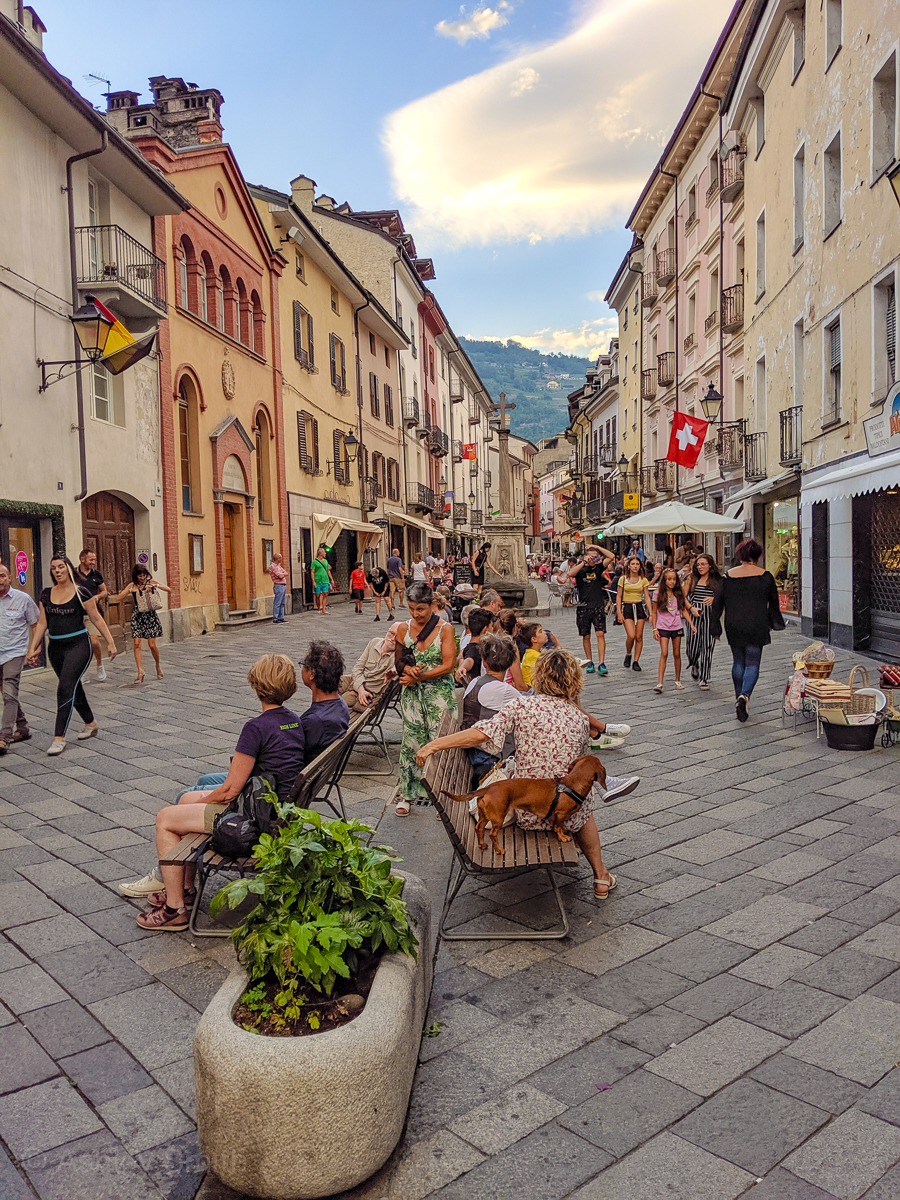
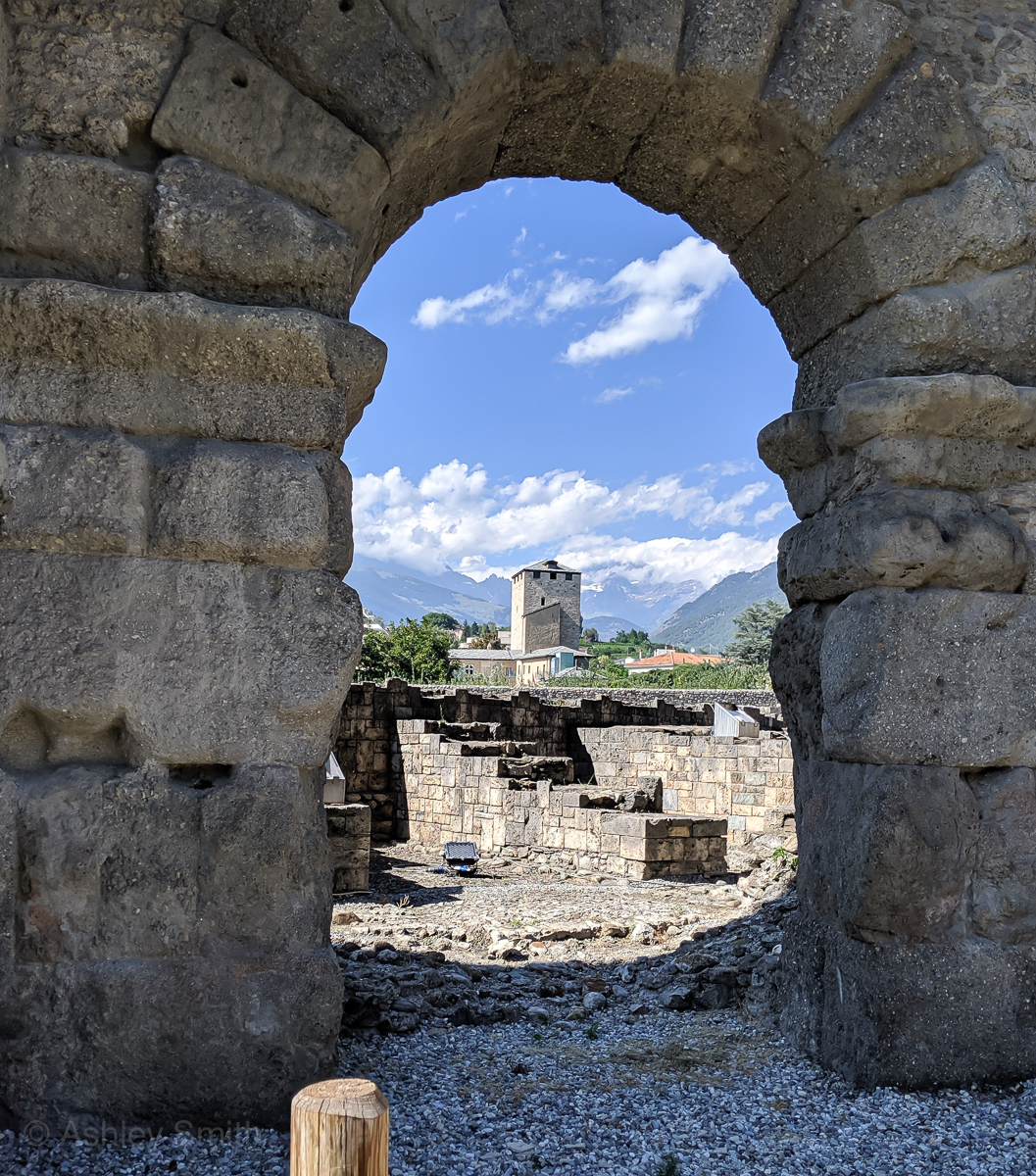
A little about Aosta, Italy
The city of Aosta is the capital of the Aosta Valley–the tiniest of Italy’s 20 regions. The Aosta Valley is famous for skiing, for being the home of numerous castles, and for being the birthplace of Fontina cheese. It’s also home to a seemingly endless amount of Roman ruins.
Aosta (the city) has a population of just over 34,000. This makes it similar in size to such US cultural centers as Marion City, Iowa and Delaware City, Ohio, in case that means anything to you.
Aosta is the kind of Italian town that’s so quaint none of the places I’m going to mention in this post have websites. It’s the kind of town where important information and funeral announcements are posted on a central bulletin board in the town square. Go ahead and file Aosta under: Places to hide after I win the lottery.
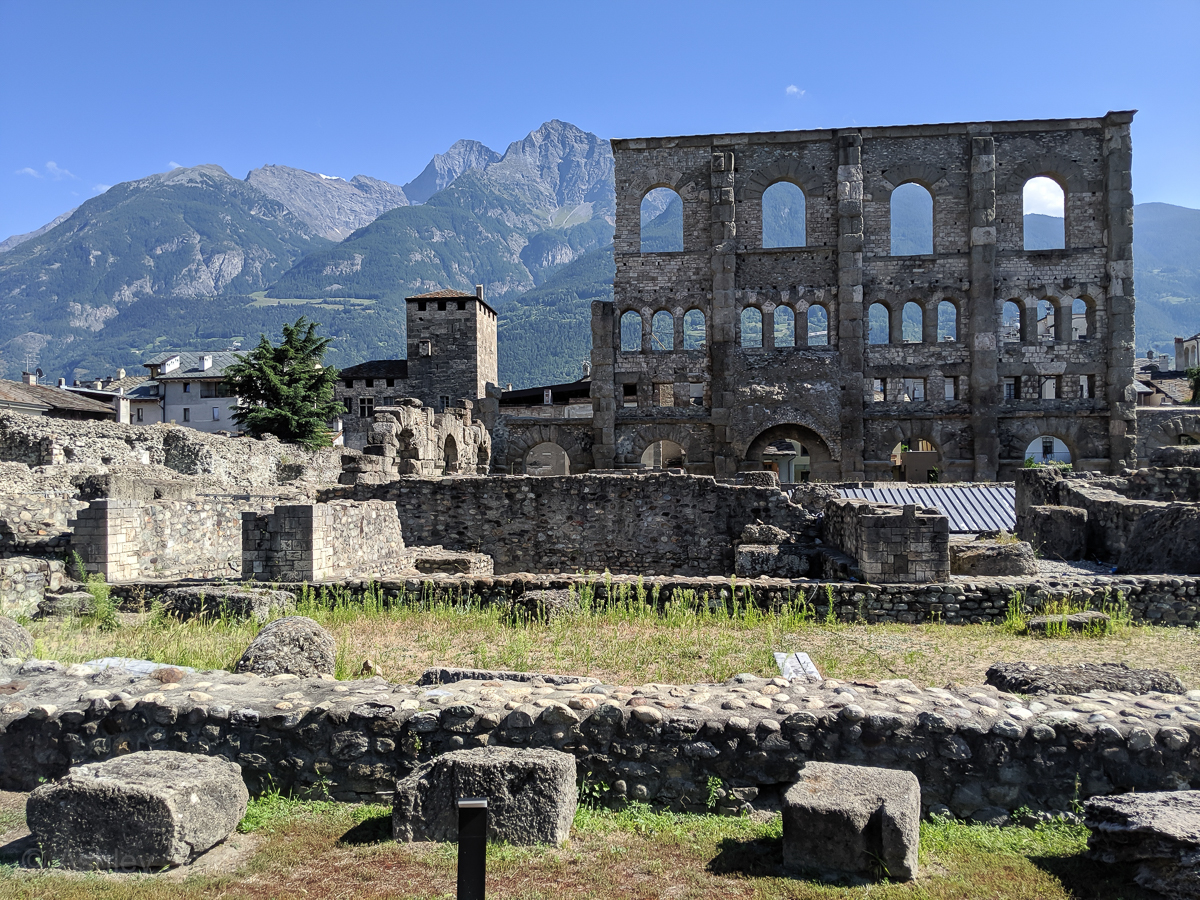
Hidden gem status aside, that’s not to say Aosta’s tourism is non-existent. Their tourism infrastructure is pretty good and almost all of the tourists I’ve encountered here are Italian. There’s plenty to do during a 1-day visit to Aosta with historical sites a-plenty, great food and entertainment, beautiful scenery, and the chance to visit a town that truly feels like a secret.
How I ended up in Aosta
A friend and I were staying in nearby Courmayeur (taking some time away from Chamonix, France) and, without a plan at all, decided to take a bus to the closest city on the map with a larger than average font size. Yes, you read that right. Literally, the letters spelling Aosta were bigger than the others within a couple hours’ drive so we figured there must be something to see and do here, right? The phrase you’re searching for right now is “sheer genius.” (Every trip you take with me is basically a trust fall.)
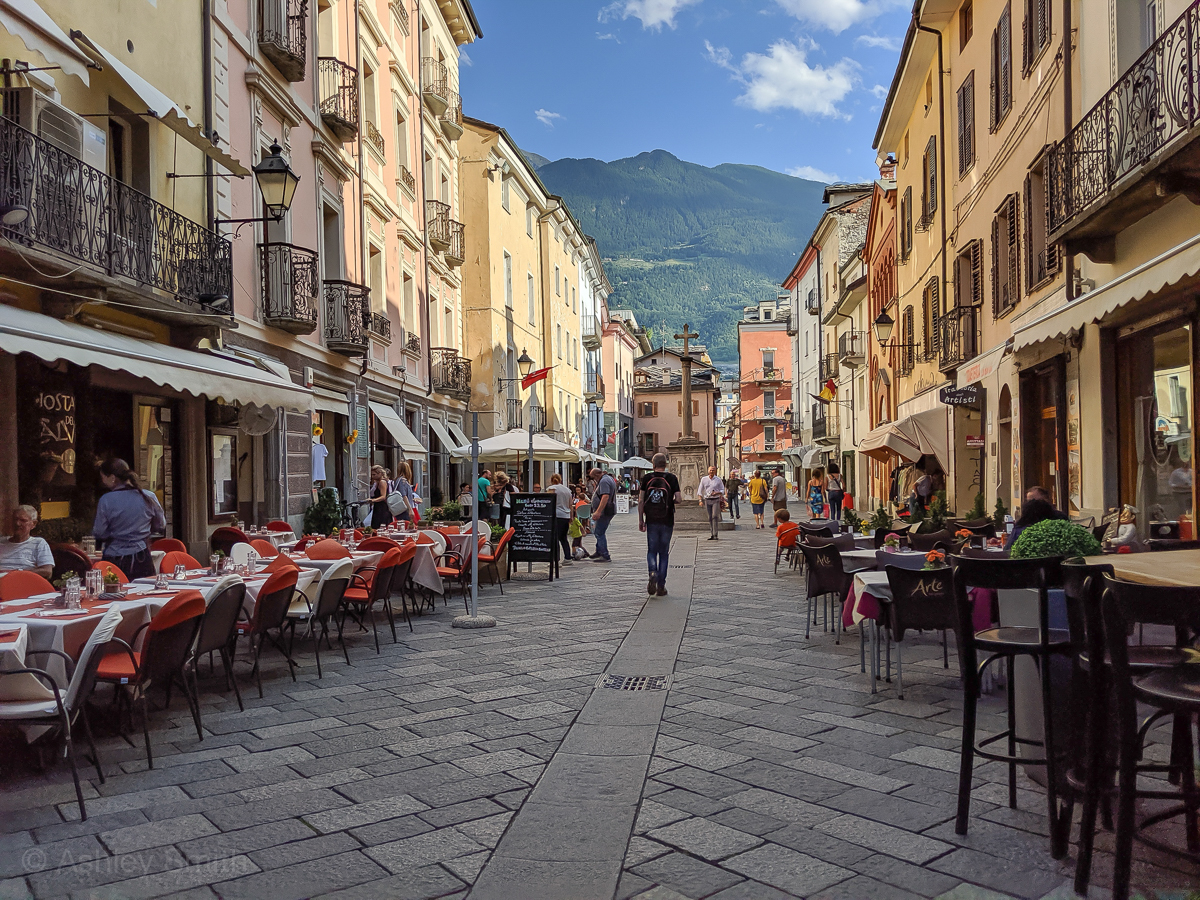
Where is Aosta, Italy?
Aosta is located in the very top left corner of Italy, right there in the nook between Italy, France, and Switzerland in the Alps. I’m fairly certain it’s hidden just inside the barrel around a Saint Bernard’s neck. It’s the literal halfway point between Geneva and Milan.
How to get to Aosta
Though Aosta is fairly hidden and definitely feels off the radar, it’s still pretty easily accessible from some major cities.
Driving to Aosta
If you’ll have your own rental car, you can easily drive to Aosta from cities like Geneva, Switzerland (2 hours), Milan, Italy (2 hours), Turin, Italy (1.5 hours), and Lyon, France (3 hours 15 minutes). Rent a car here if you need one.
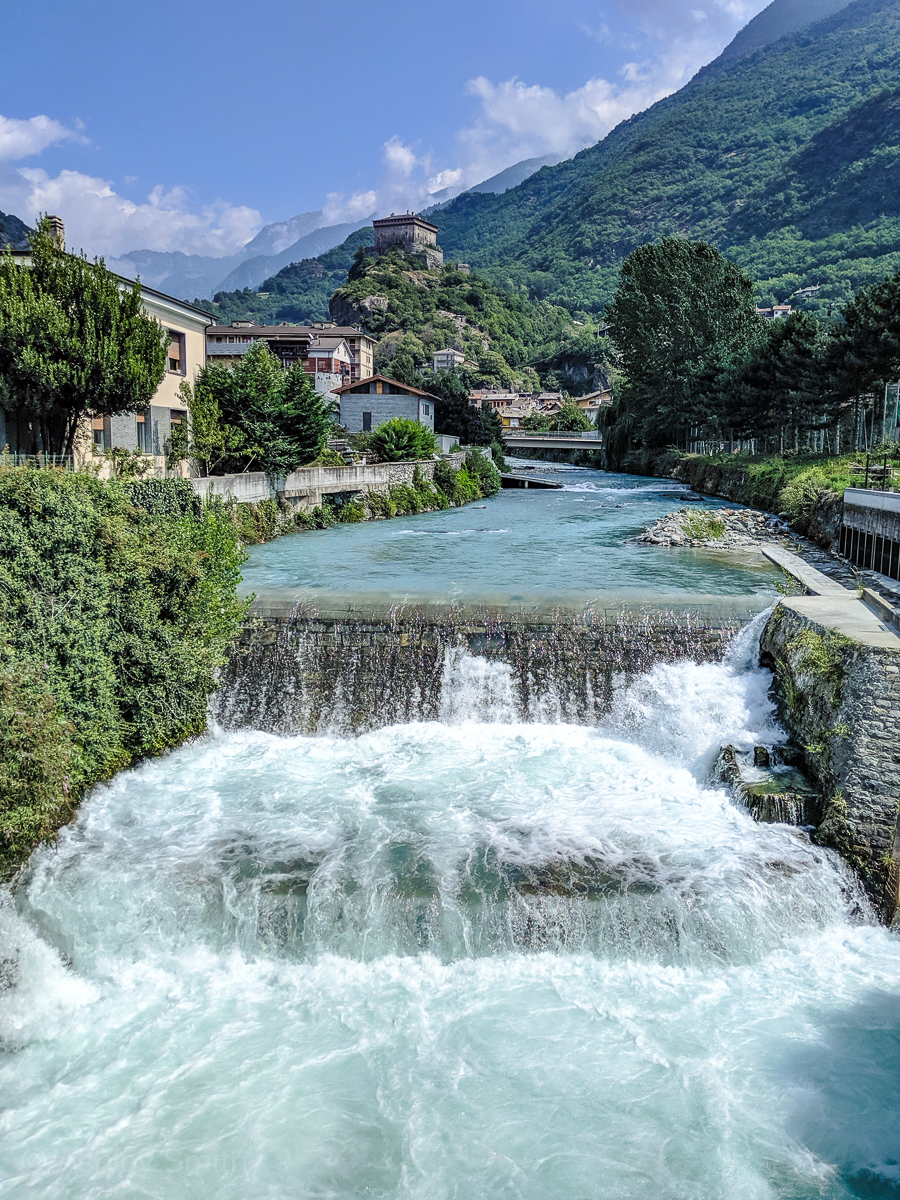
Taking the train to Aosta
You can technically take the train to Aosta from Milan, but it’s going to be neither a fast nor a direct route. No train routes exist from the other cities. I’d just go ahead and erase the idea of taking a train here from your mind.
Taking the bus to Aosta
Instead, you can take the bus to Aosta from all these major cities. Most routes are direct and take only slightly longer than driving. Regardless, it’s going to be super cheap. I’m specifically talking about the Flixbus and this is also how I personally arrived to Aosta in Courmayeur. (And how I traveled from Aosta to Torino.) Check out Flixbus schedules and rates here.
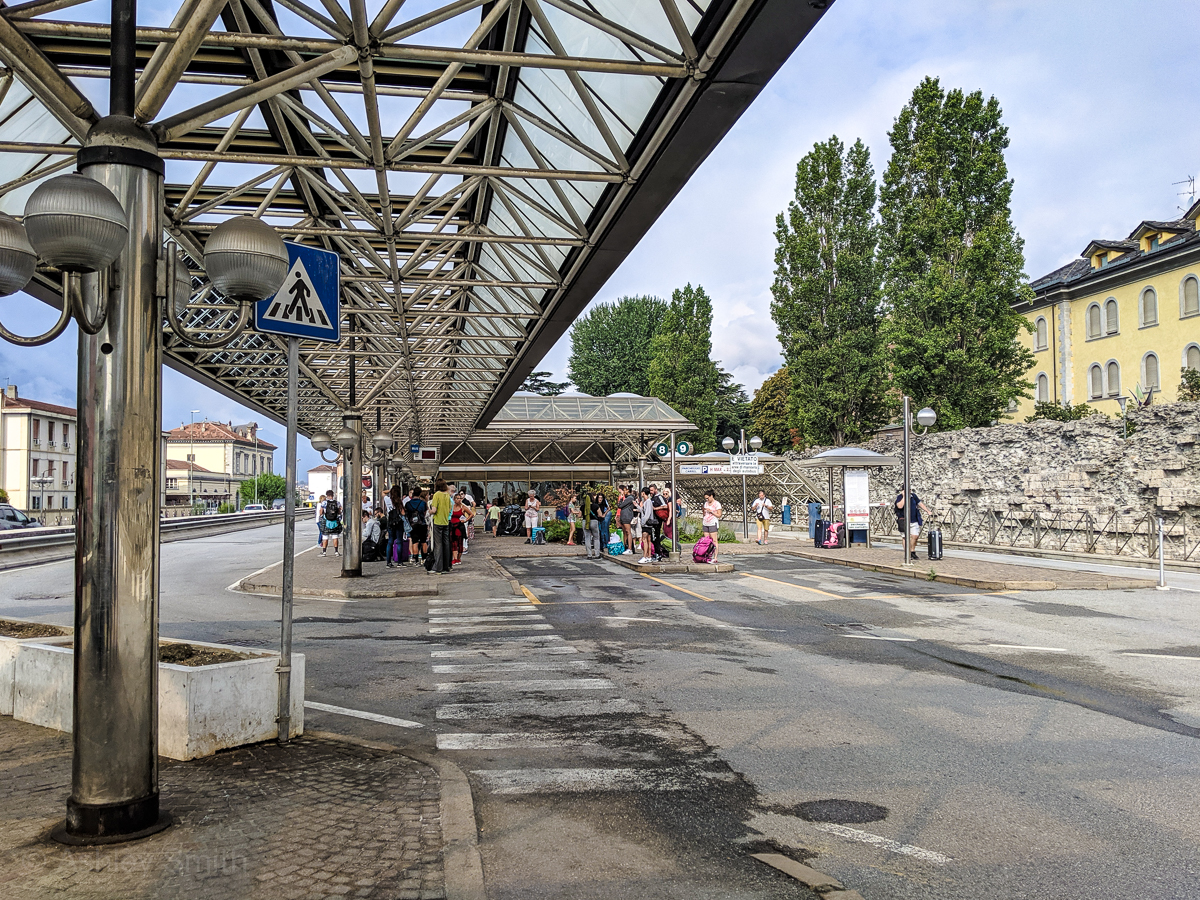
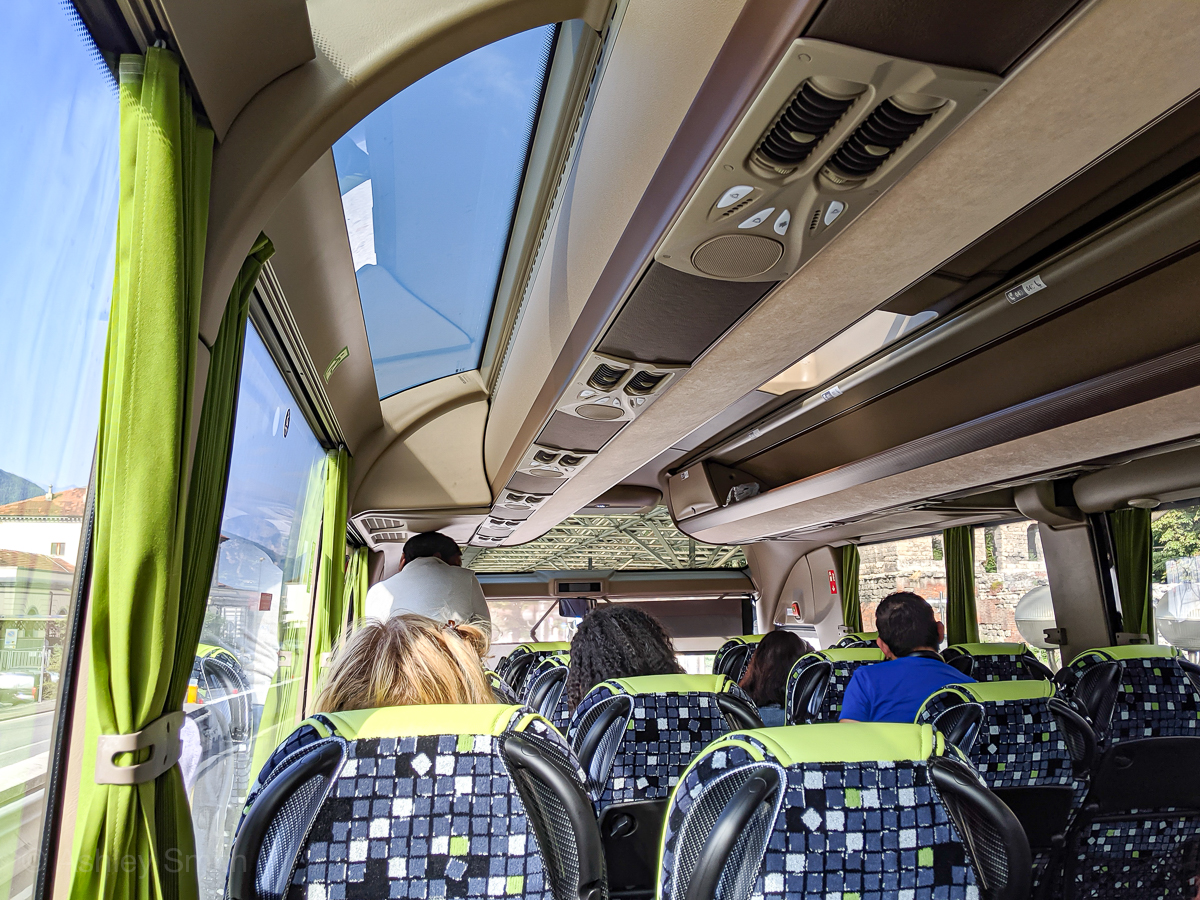
1 day in Aosta, Italy
Even with only 1 day in Aosta, you’ll get to enjoy a seriously interesting experience. From the city’s bilingualism (everything here is in both Italian and French), the ancient Roman ruins on every corner, and the fact that you might be the only non-Italian in sight, it’ll be clear you’ve found yourself in a lovely little oasis in the mountains.
You’ll be able to walk everywhere you need to go here and you won’t be hard up to find great places to eat, drink, and shop. And when you do have questions, the local tourism office or even just the locals themselves won’t hesitate to offer help. It really is such a gem!
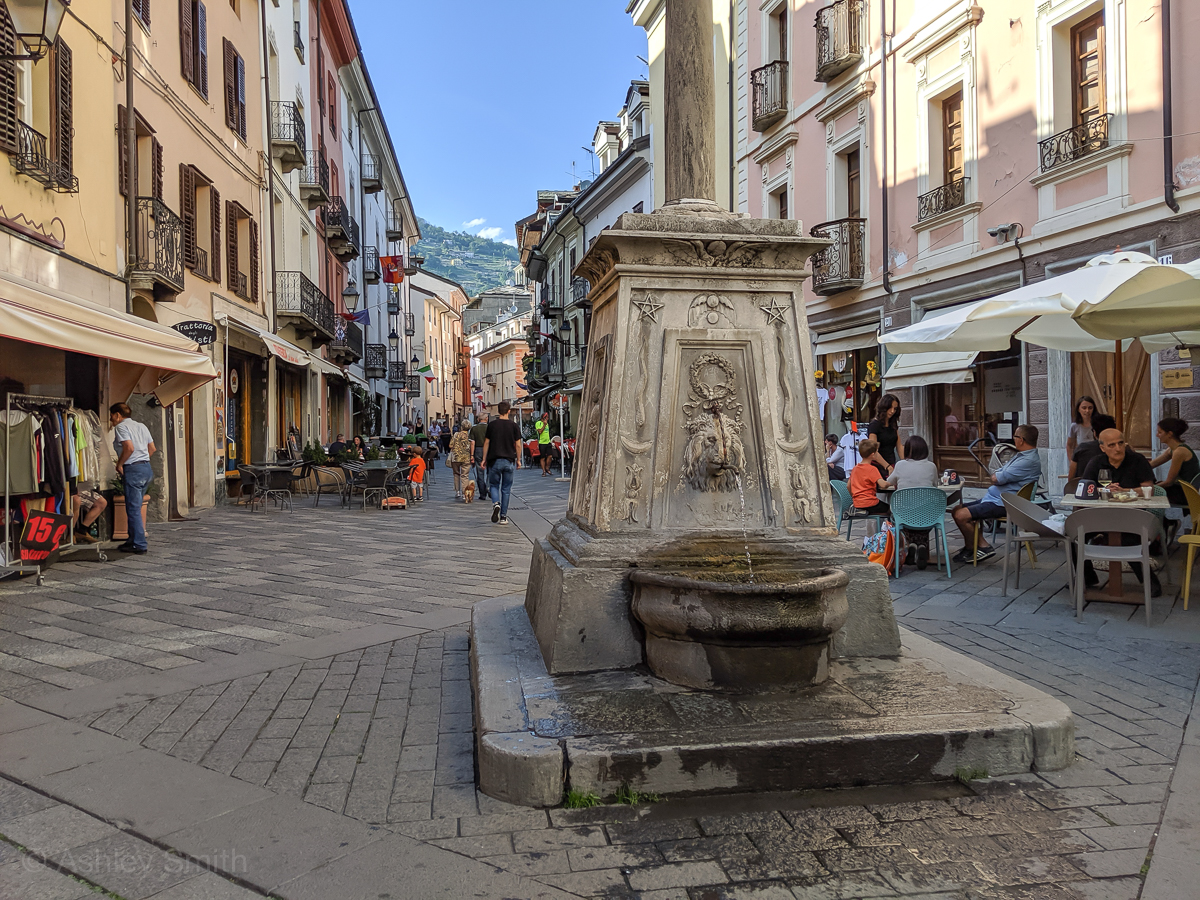
1 day in Aosta: Map
This map contains all the places I mention in this post (including tourist sites, restaurants, hotels, and logistical concerns). To save this map: Click on the star ⭑ next to the map’s title to save in your Google Maps. To use this map: When you get here, open Google Maps on your phone, click “Saved” at the bottom, then click “Maps.”
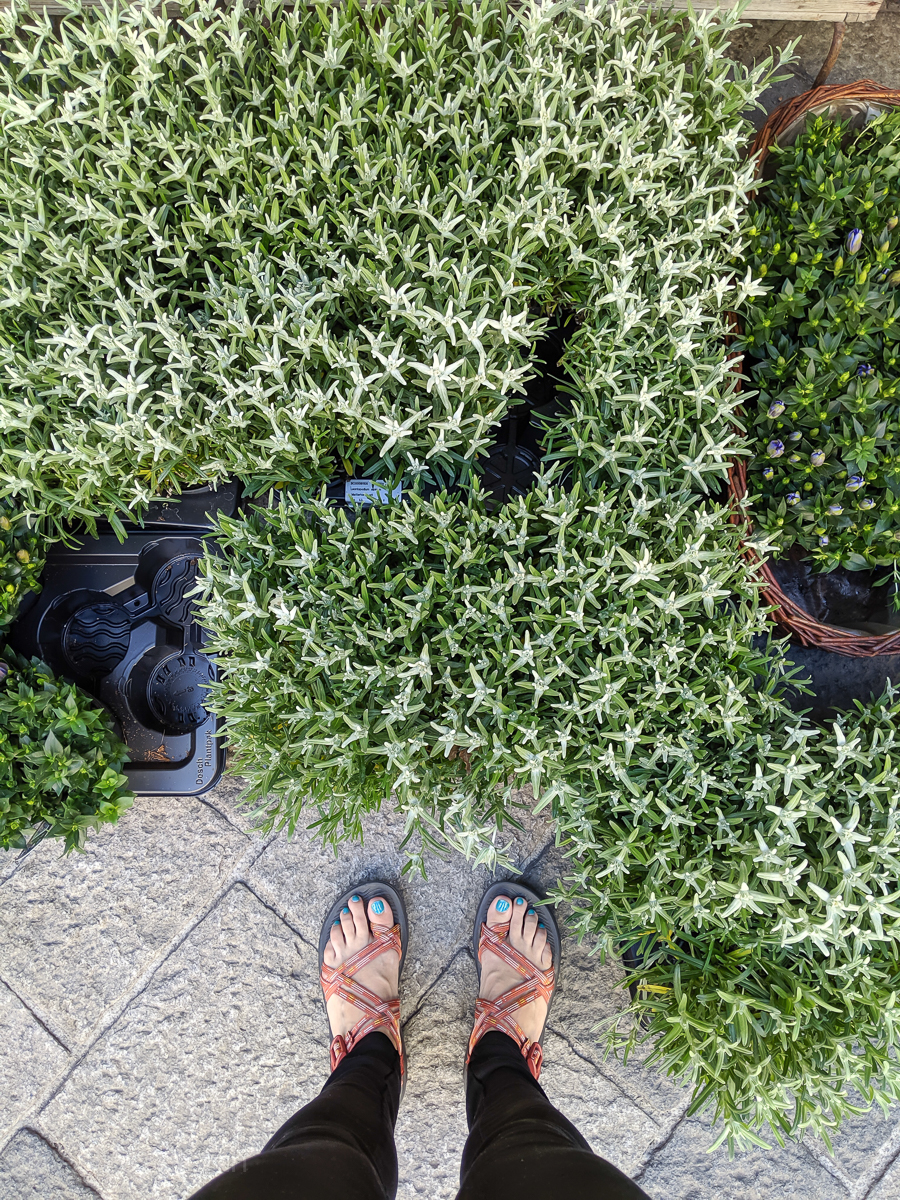

How to spend 1 day in Aosta
Even with just 1 day in Aosta you can still see the city’s biggest tourist attractions as well as experience the culture that makes this little town tick. Prepare to say, “OMG this place is SO cute” for twelve straight hours. Here are the city’s top visitor attractions.
Aosta Tourism Office
Make your first stop here the Aosta tourism office for all the information and resources you’ll need for your 1 day in Aosta. You can pick up a map of the town, an Aosta guide that lists all the things to do in Aosta, purchase an Aosta Valley Card, and probably pet a dog or two.
The Aosta Valley Card
The Aosta Valley Card is a relatively cheap tourism pass you can buy that gets you discounts on tons of stuff like tourist attractions, castles, restaurants, shopping, and more. (Really, it only costs €12.) Ask about it here at the tourism office and they can give you all the details.
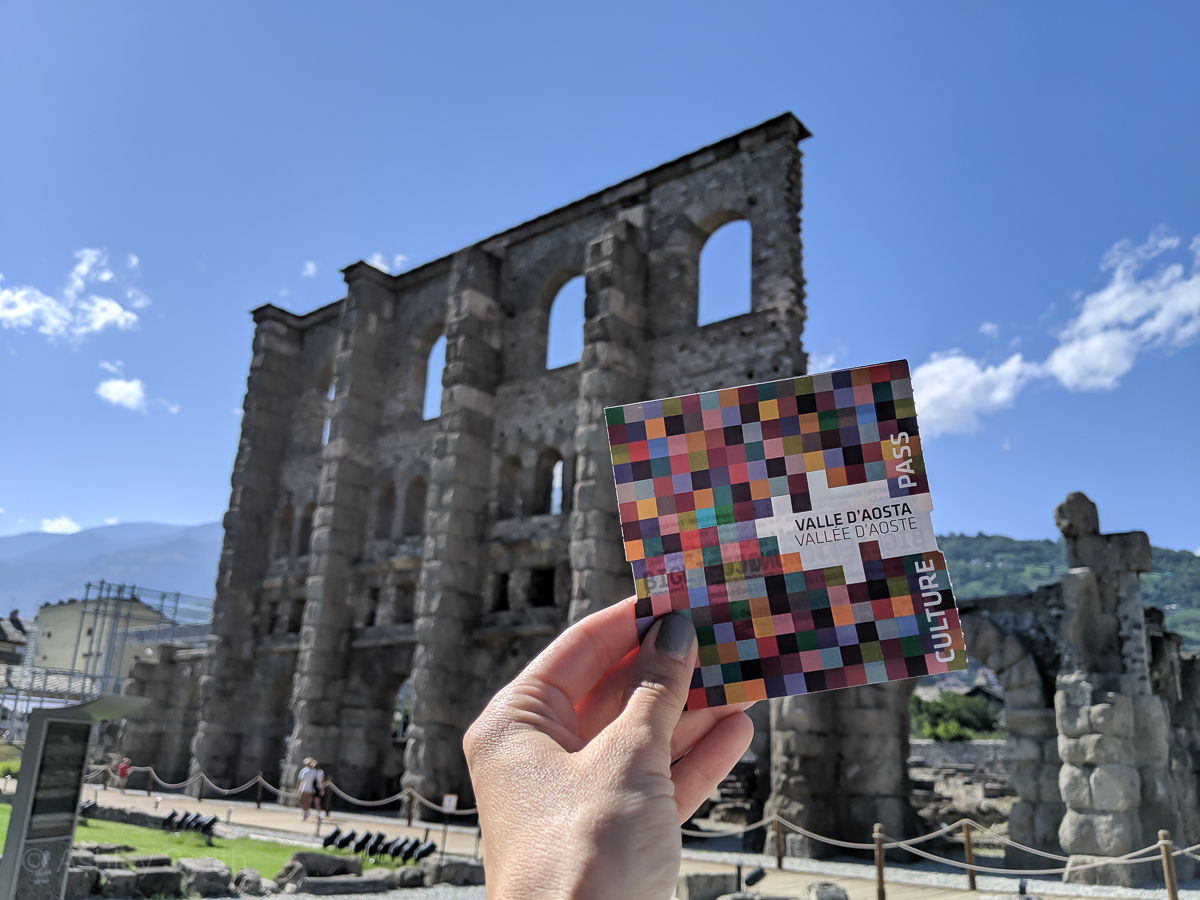
Porta Praetoria
The tourism office itself is located in one of the city’s oldest structures: the Porta Praetoria. The Porta Praetoria was once the main gate into the city and built in 25 BC. You can still see the gate’s three openings: one for carriages and the other two for pedestrians (and their many, many dogs apparently).
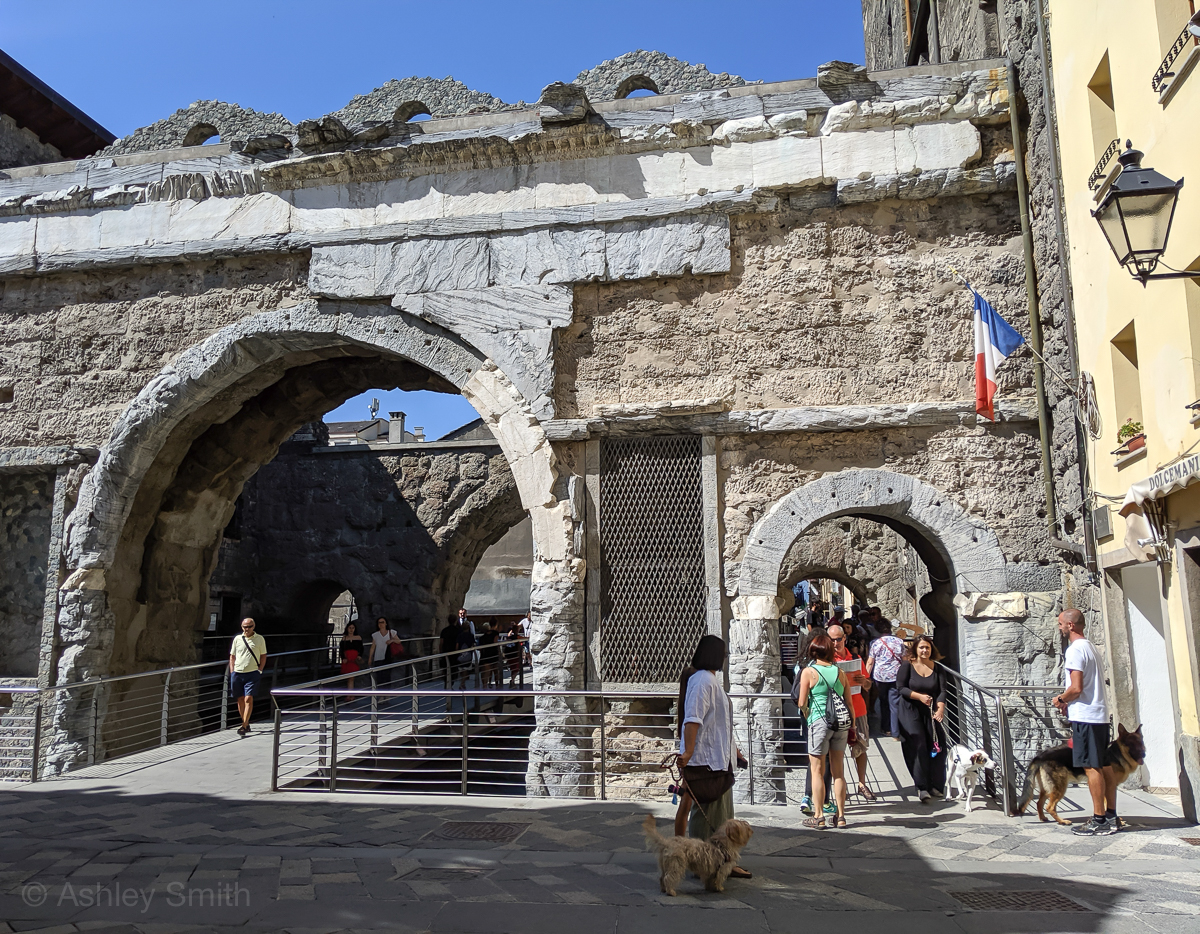
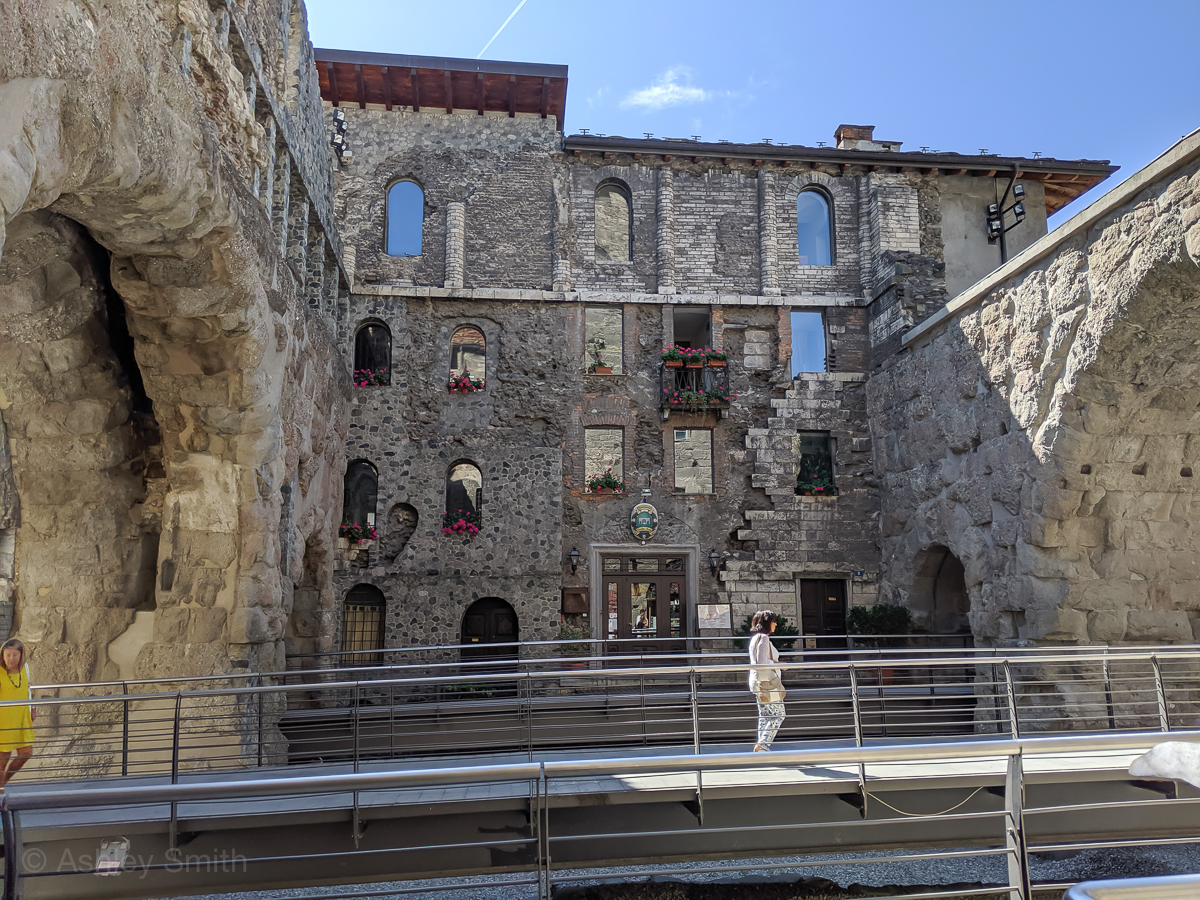
Arch of Augustus
Farther down the same road, the street turns into a rotary surrounding an enormous and visibly ancient stone arch. This is the Arch of Augustus, constructed by the Romans in 25 BC. It served as a monument dedicated to their recent victory over a Celtic tribe called the Salassi.
Throughout history this arch has served as a home for a noble family, a fortification, and a super elaborate storage unit. If even the lords and ladies of the Middle Ages had a place to store their junk, I don’t see why I can’t keep my boxes of childhood *stuff* in my parents’ garage for a few more years. But I digress.
Today, a copy of a wooden crucifix from 1449 hangs from the center of the arch as an offering to stop the nearby river from flooding. (The original is in one of the museum’s here.) And speaking of weird things the Buthier River has done…


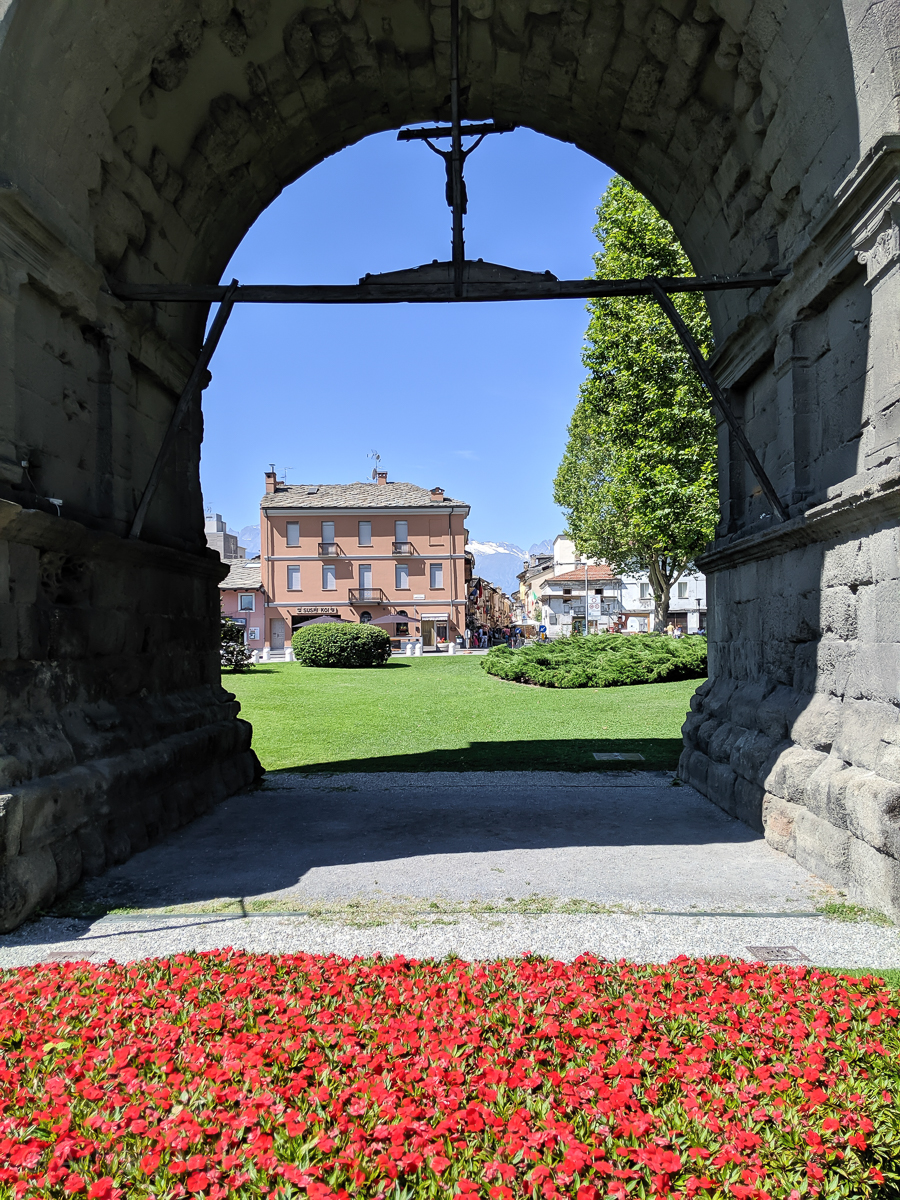
Pont de Pierre
Continue straight through the Arch of Augustus (if on foot, that is–huge side note right there) and cross over the river. You’re now on the Pont de Pierre–an equally ancient stone bridge. An ancient Roman bridge with a French name pretty much sums up Aosta, a town where you can buy a potted edelweiss on the sidewalk while getting glared at by an old woman on a balcony at the same time.
The Pont de Pierre is a perfectly preserved Roman segmental arch bridge that also dates back to the reign of Augustus. It used to span the nearby Buthier River but, ever since the river changed course in the Middle Ages, now just spans a lovely piece of grass in between some houses. Still, it’s one of the town’s prized monuments.
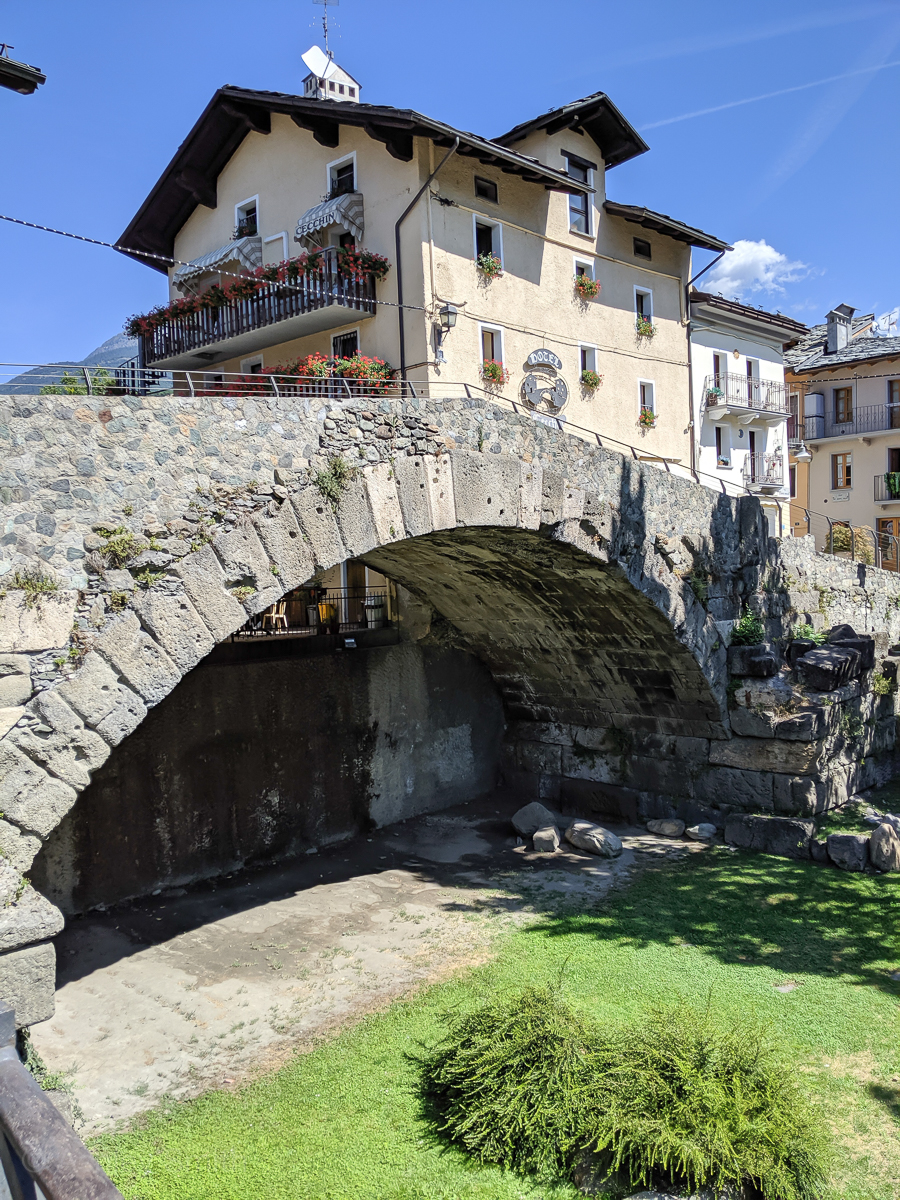
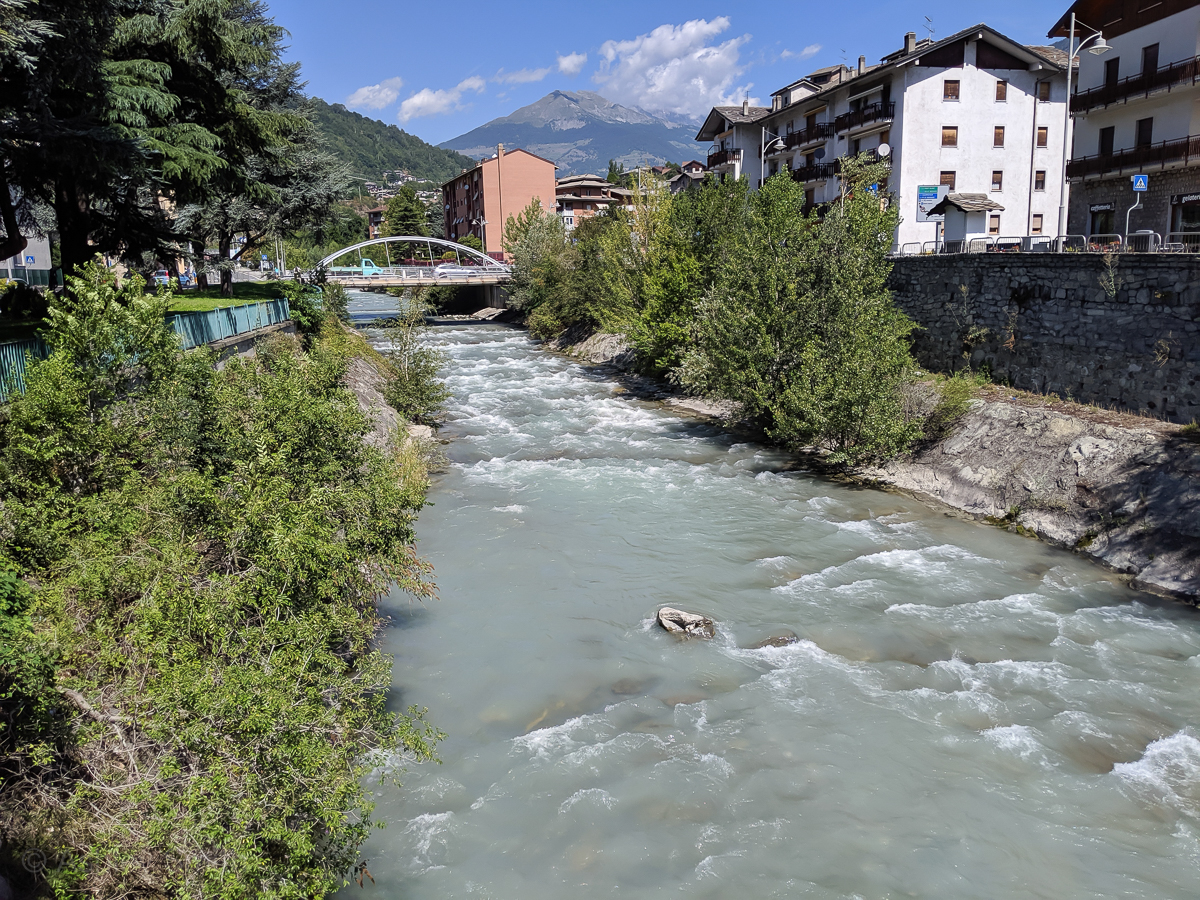
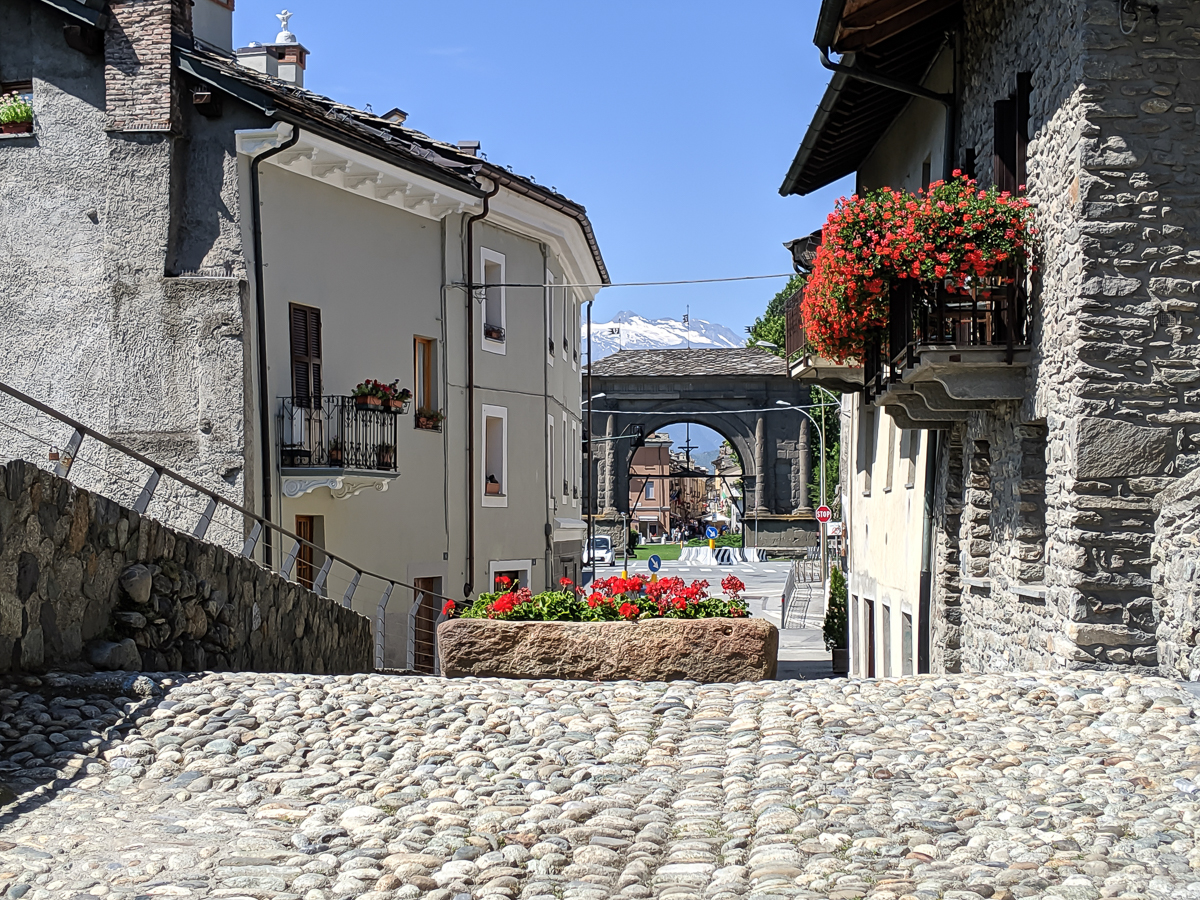
Collegiate Church of Saint Ursus
This church, as old as it is, was actually completely rebuilt in the 9th century with the bell tower dating to the year 989. Inside you can see 15th century frescoes, relics of Saints Gratus (patron saint of both Aosta and of vineyards) and Ursus (whom the church was named after) down in the crypt, and original Roman mosaics through glass windows in the floor.
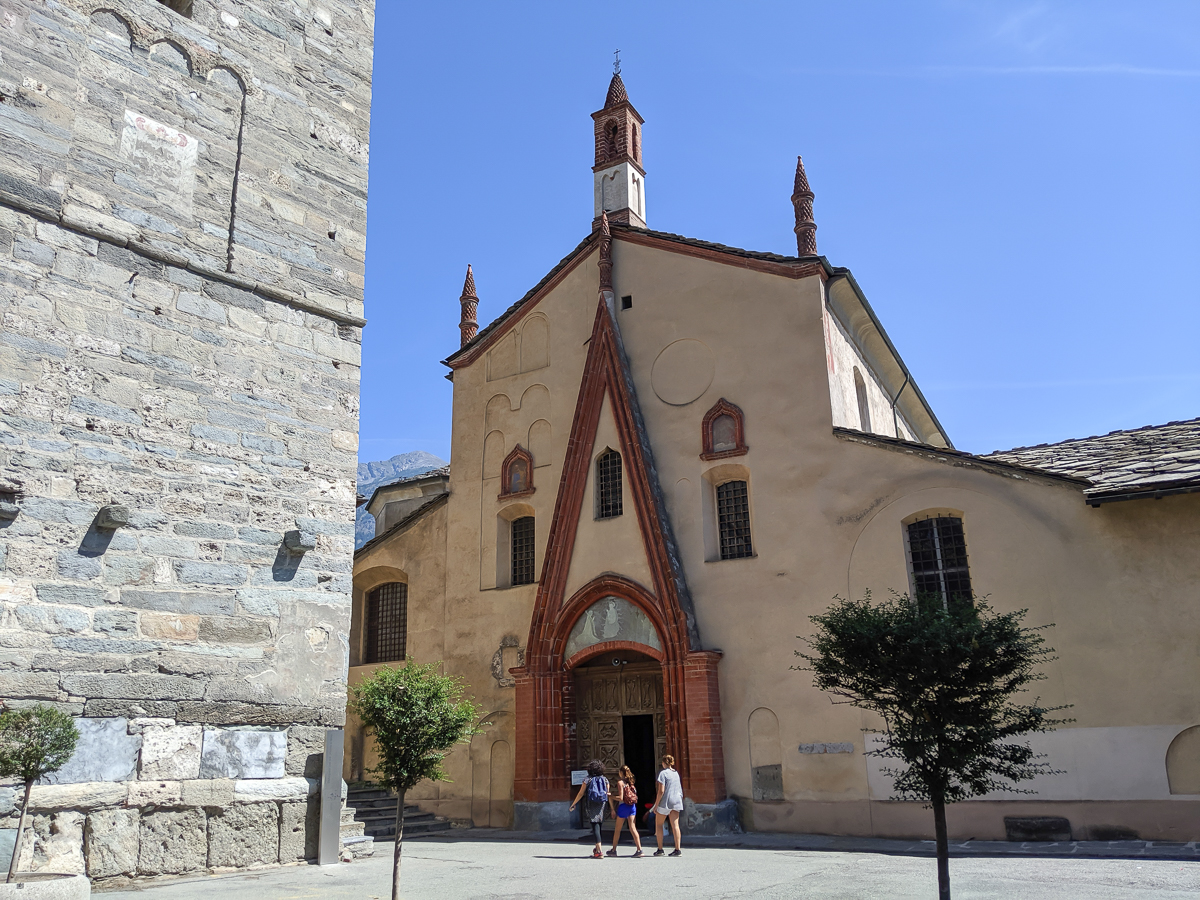


Roman Theater
The Roman Theater is Aosta’s crown tourism jewel. It, too, was built during the reign of Augustus in the 1st century. What you can see today is just the southern façade of the theater, but there are numerous ruins to explore inside the complex. (And cats! I don’t think Roman ruins are even allowed to exist without cats.) They still host musical and theater performances here too!
If you’d like another lovely little oasis full of ancient Roman ruins, check out Tivoli.
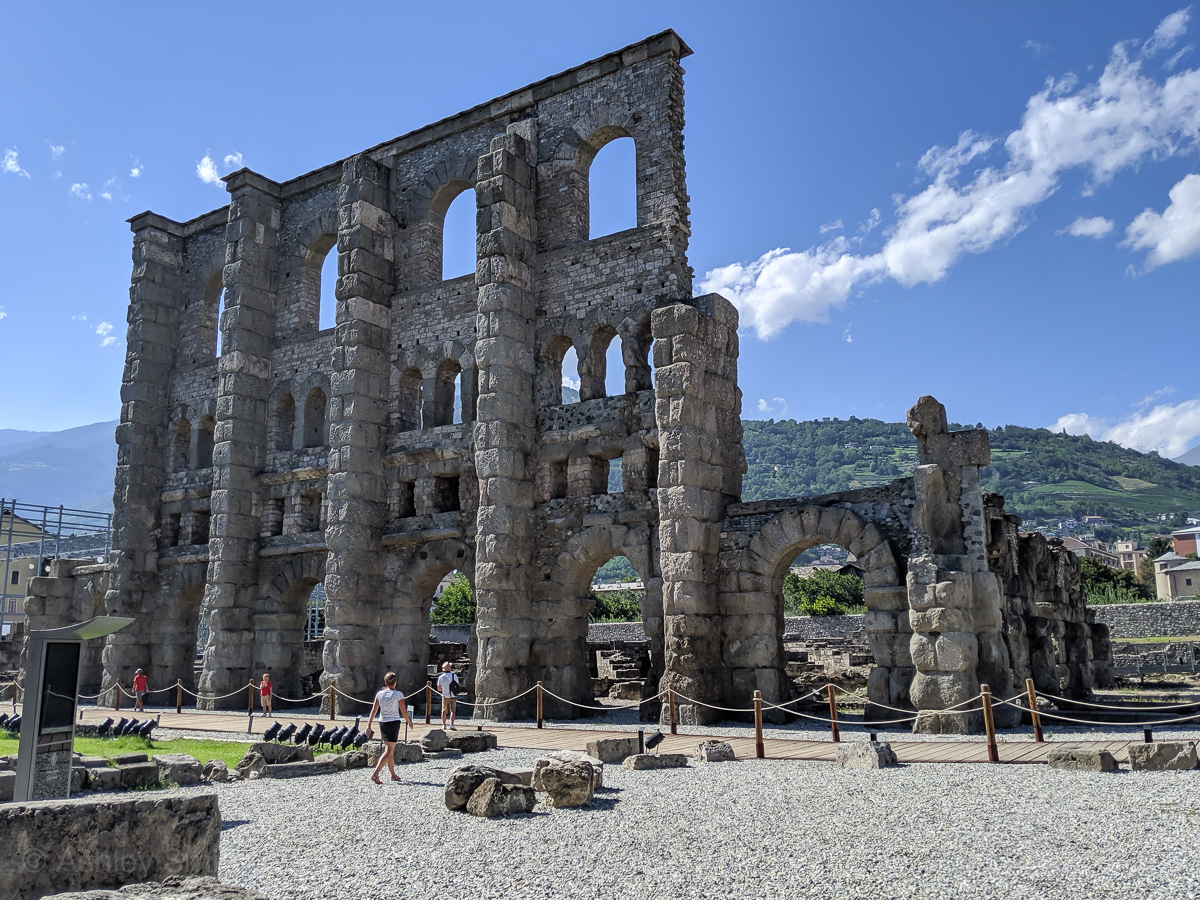
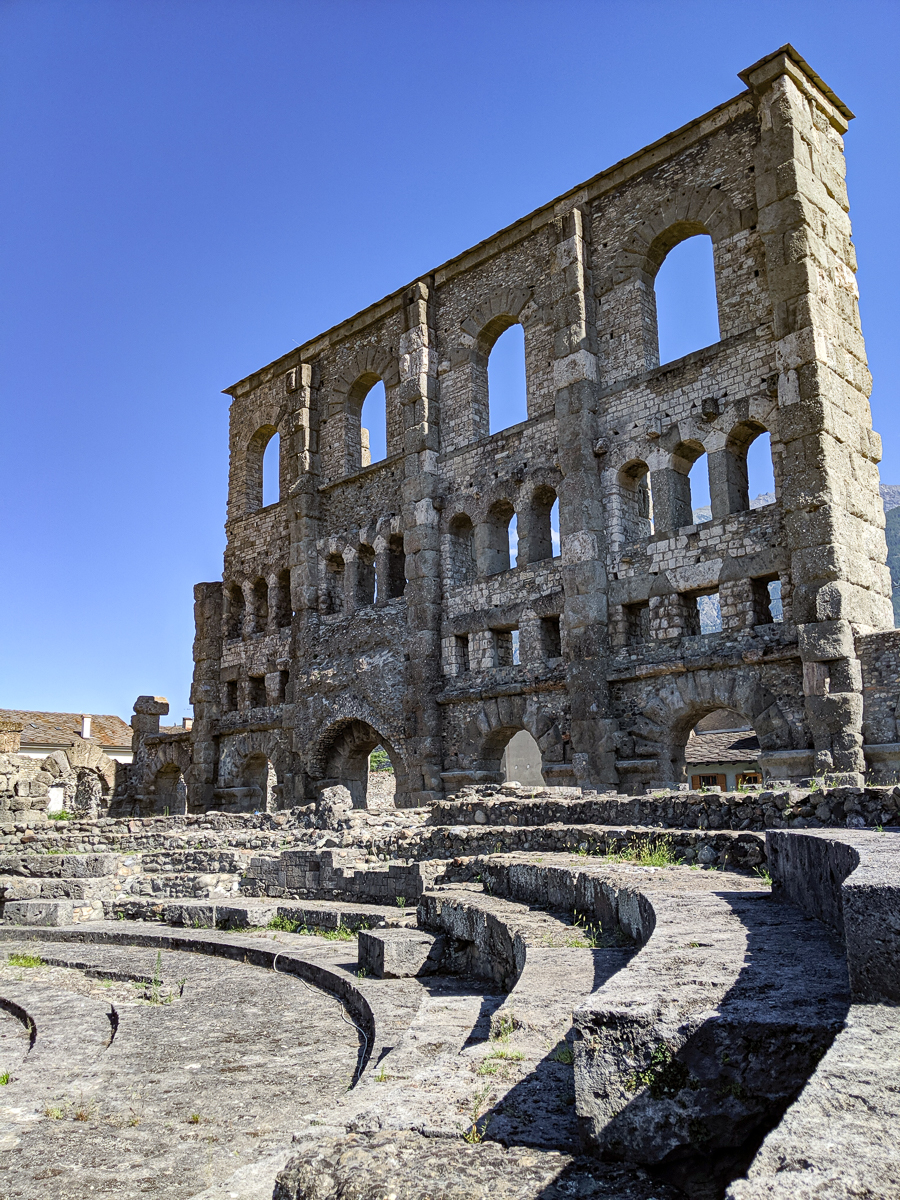
Forensic Cryptoporticus
Despite this place having the word ‘forensic’ in its name, no one actually knows what this place is or why it was built. I guess that’s where ‘cryptoporticus’ comes in.
The Forensic Cryptoporticus dates back to–yeah–the times of Augustus and no one really knows what its purpose was. Historians believe it may have been a warehouse for military storage, but also as just a way to level out the city, in a roundabout way. Regardless, it’s pretty cool.
Eventually, they simply used it as cellars throughout time. Today, you can tour the underground areas and see some active archaeological digs and ruins among other things.
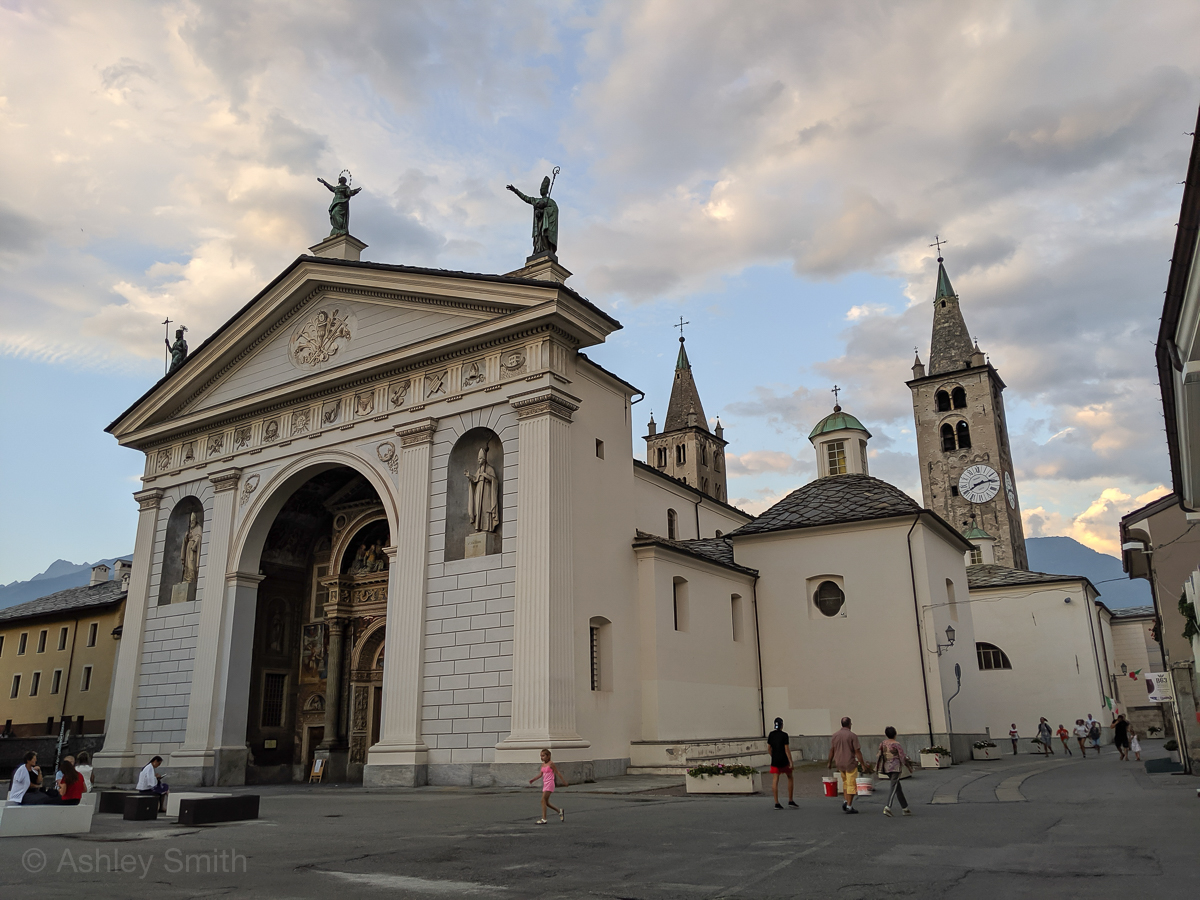
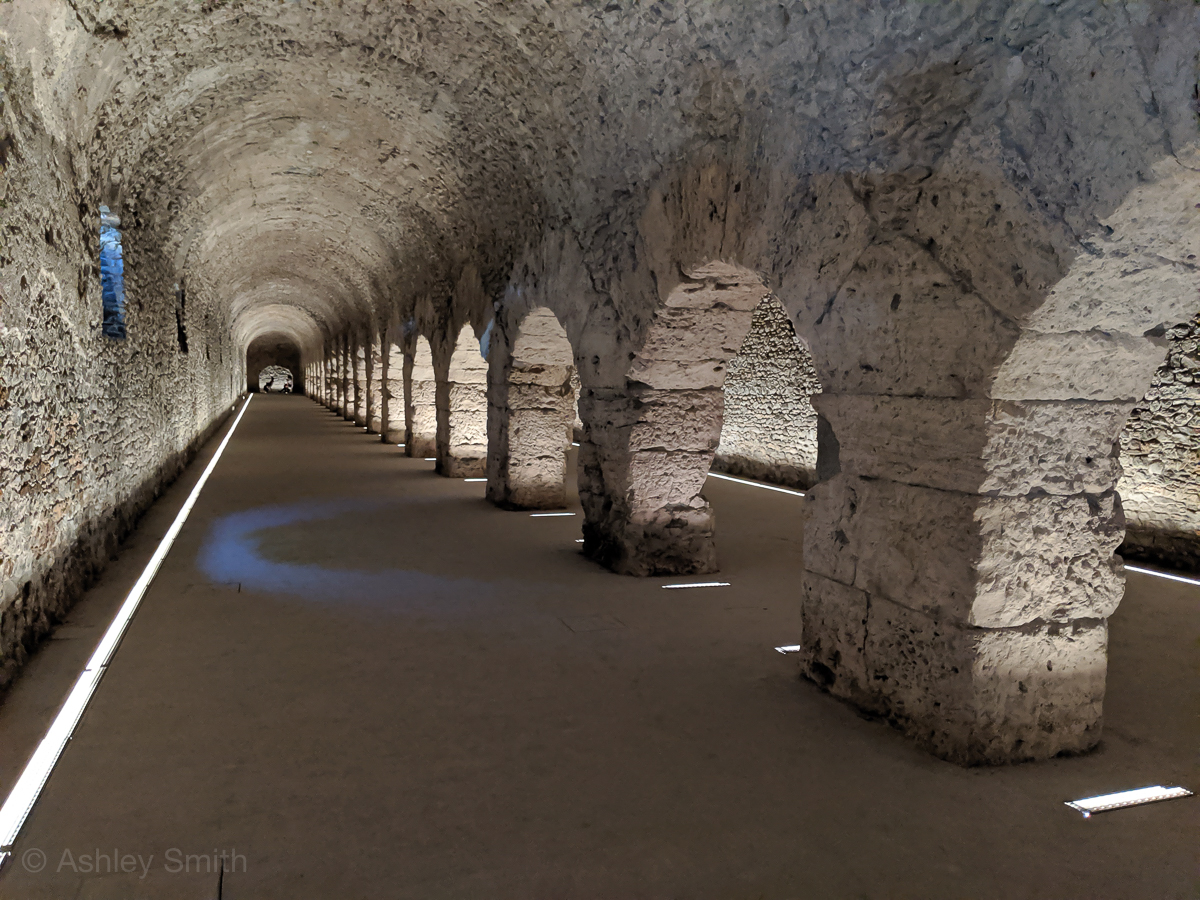

Regional Archaeology Museum
Next up is the Regional Archaeology Museum–a museum that has, get this, archaeological artifacts from the region.
It has a ton of exhibits with tons of artifacts and the building itself was built over ancient ruins you can see through windows in the floors and walls. There’s a large variety of, umm, things going on here, made even more confusing by the fact that the displays are only explained in French and Italian, and at some point there was some stuff about the Smurfs. So there you go.
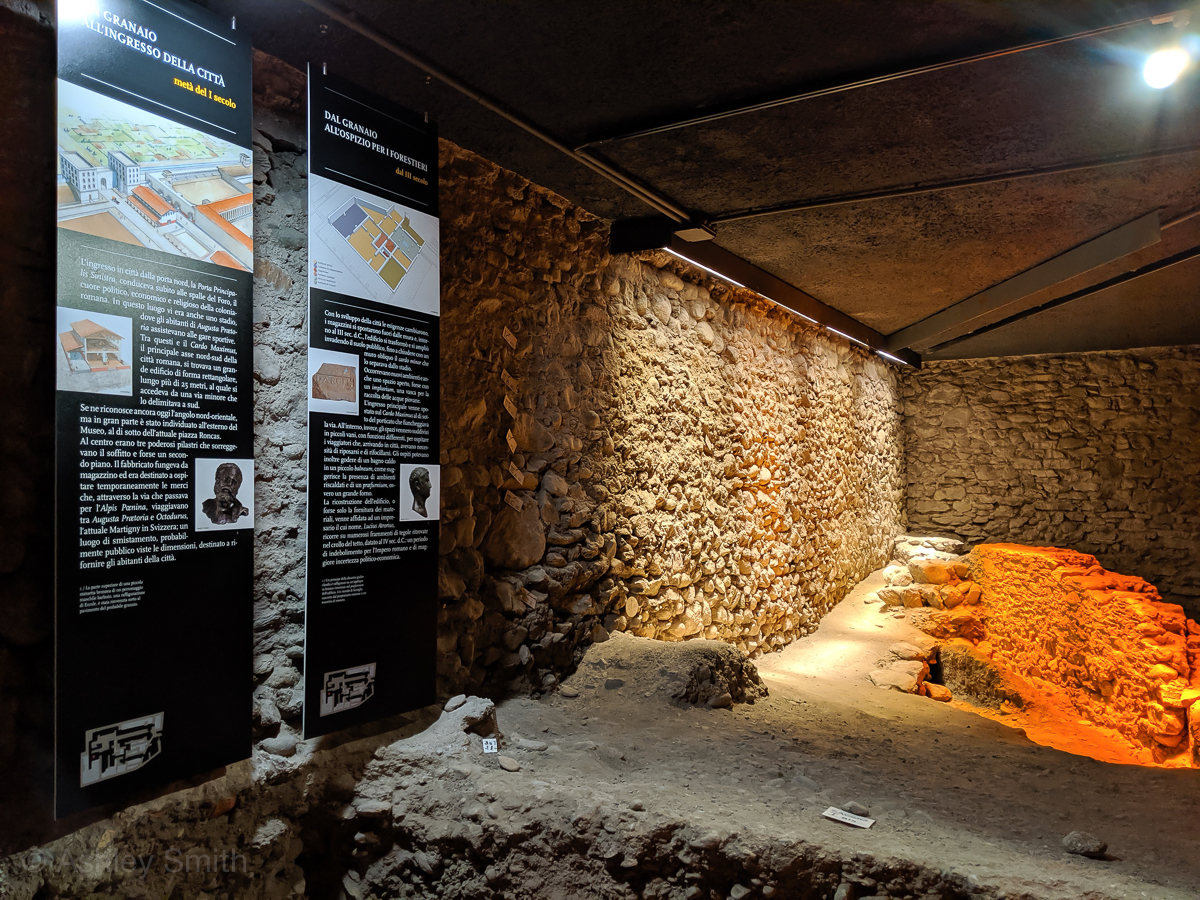
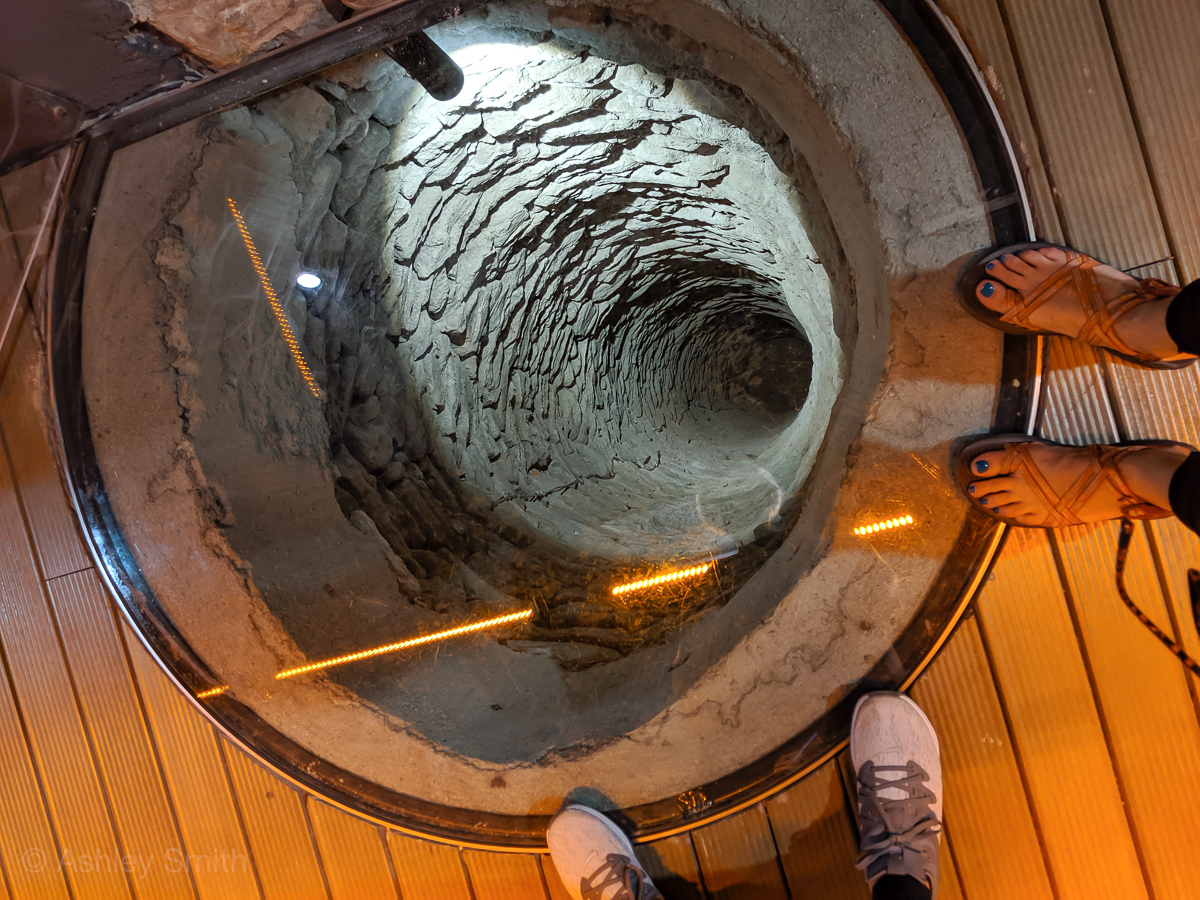
Passegiatta & Aosta’s Main Square
Now that the sightseeing portion of your 1 day in Aosta has come to an end, it’s time to unwind Italian style. Though this little town is unique in so many ways, there’s still one solid Italian tradition that happens here every night: passegiatta.
Passegiatta is a “leisurely stroll” taken in small Italian towns such as this one, around dusk, simply for the act of strolling. It’s a way to shop, get some fresh air, and socialize since you know everyone here knows everyone else.
Passegiatta may be my favorite thing about traveling in Italy. Grab yourself a gelato and simply wander through the streets of town. There are a million ways to be entertained. And most of them have their shirts unbuttoned to their navels.
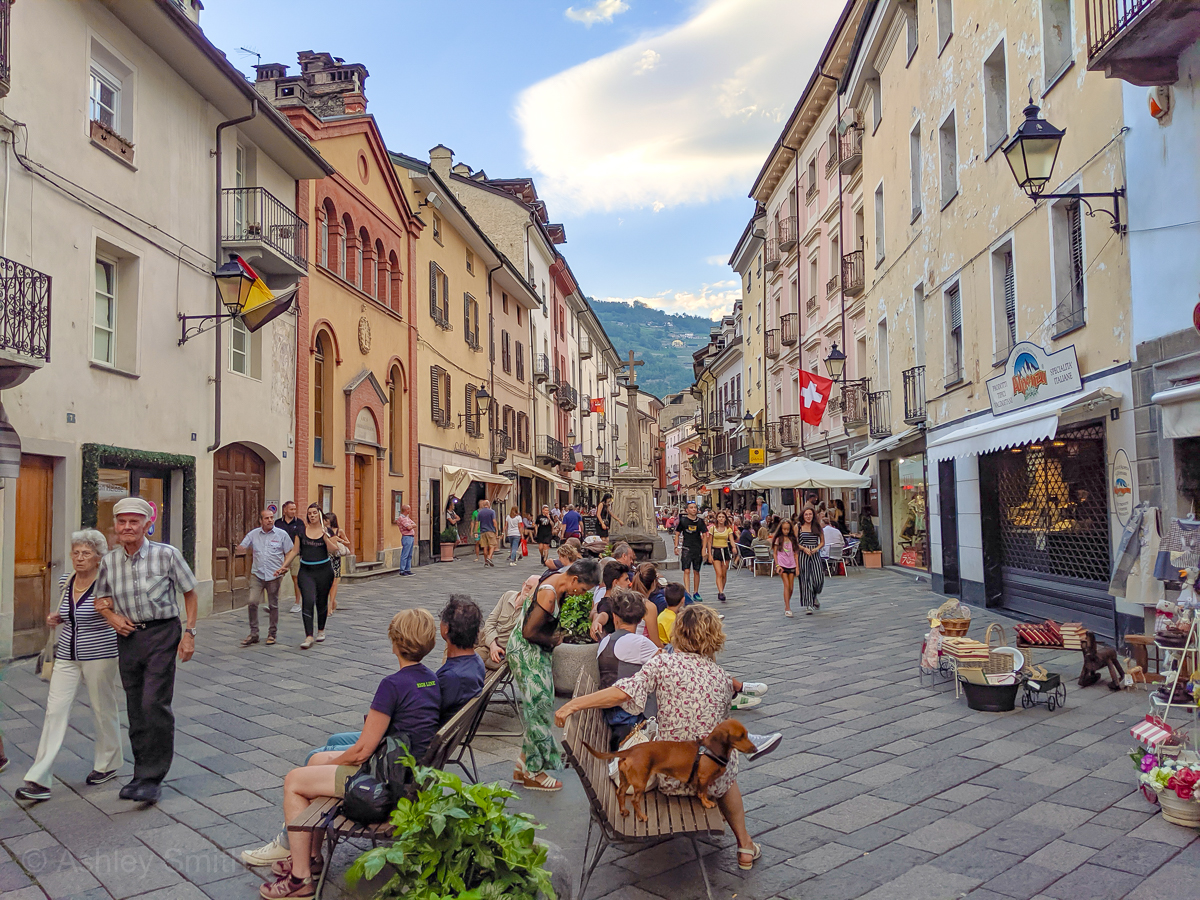
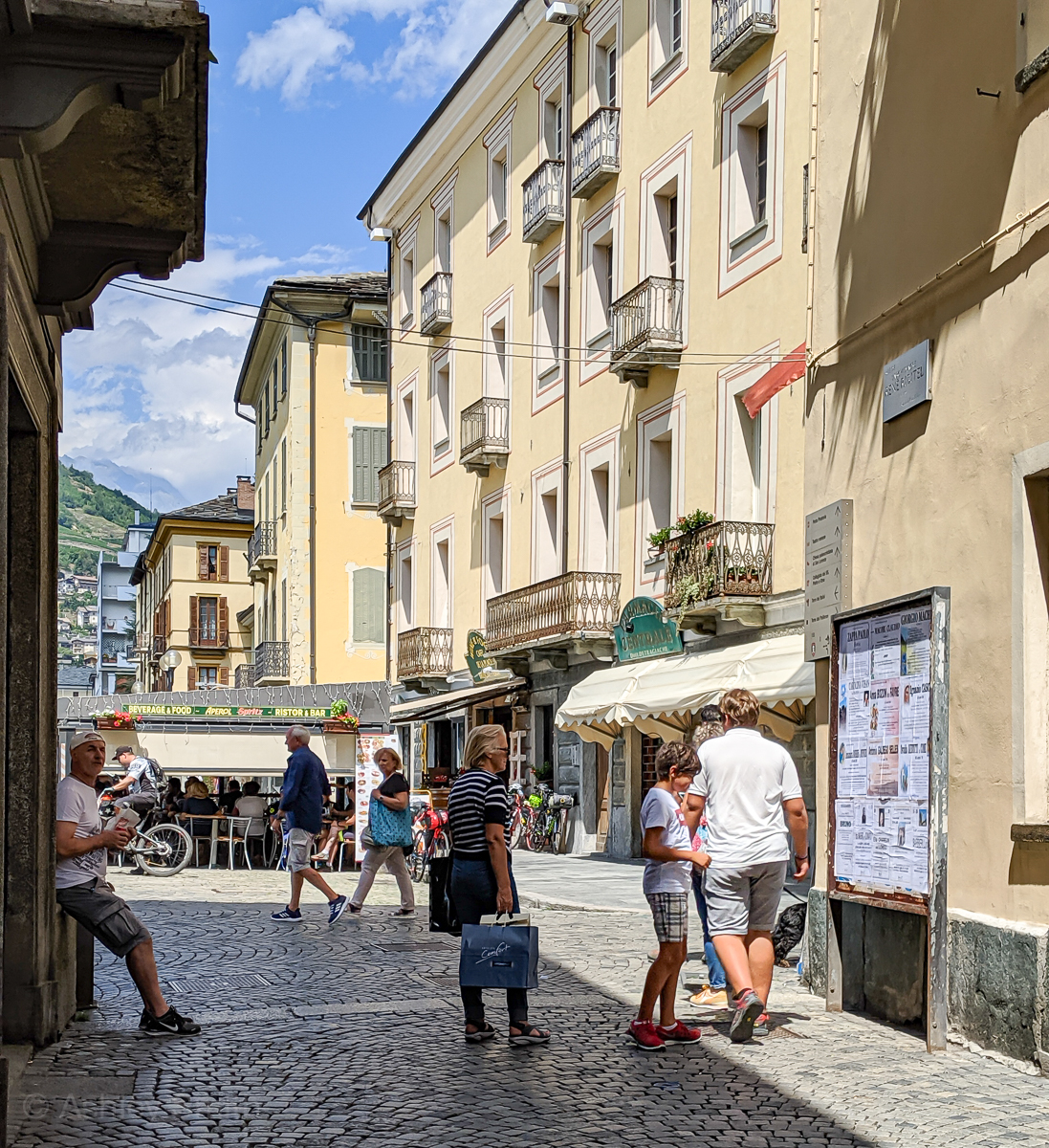
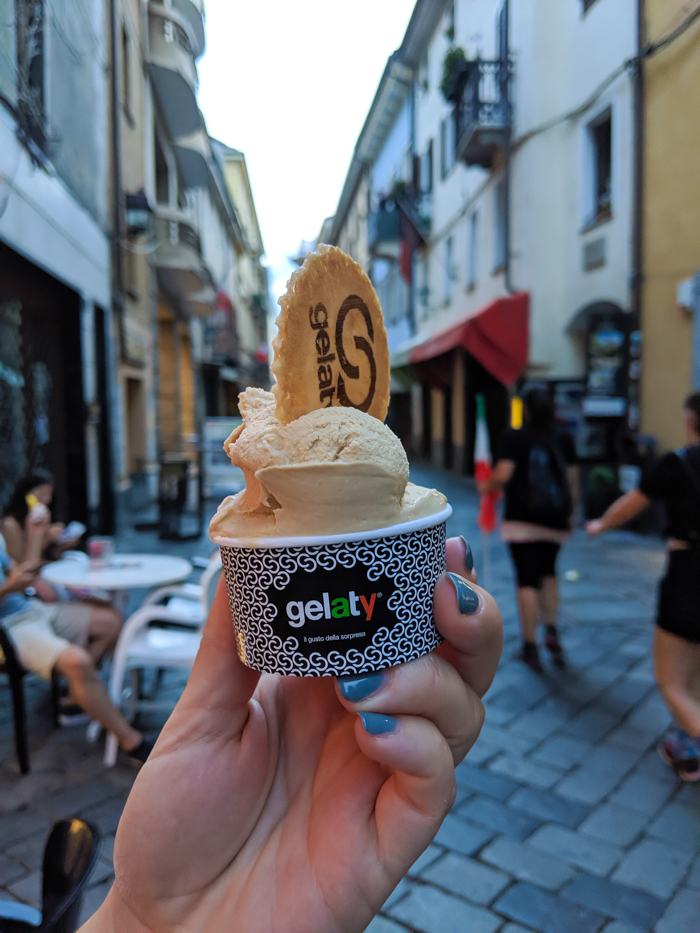
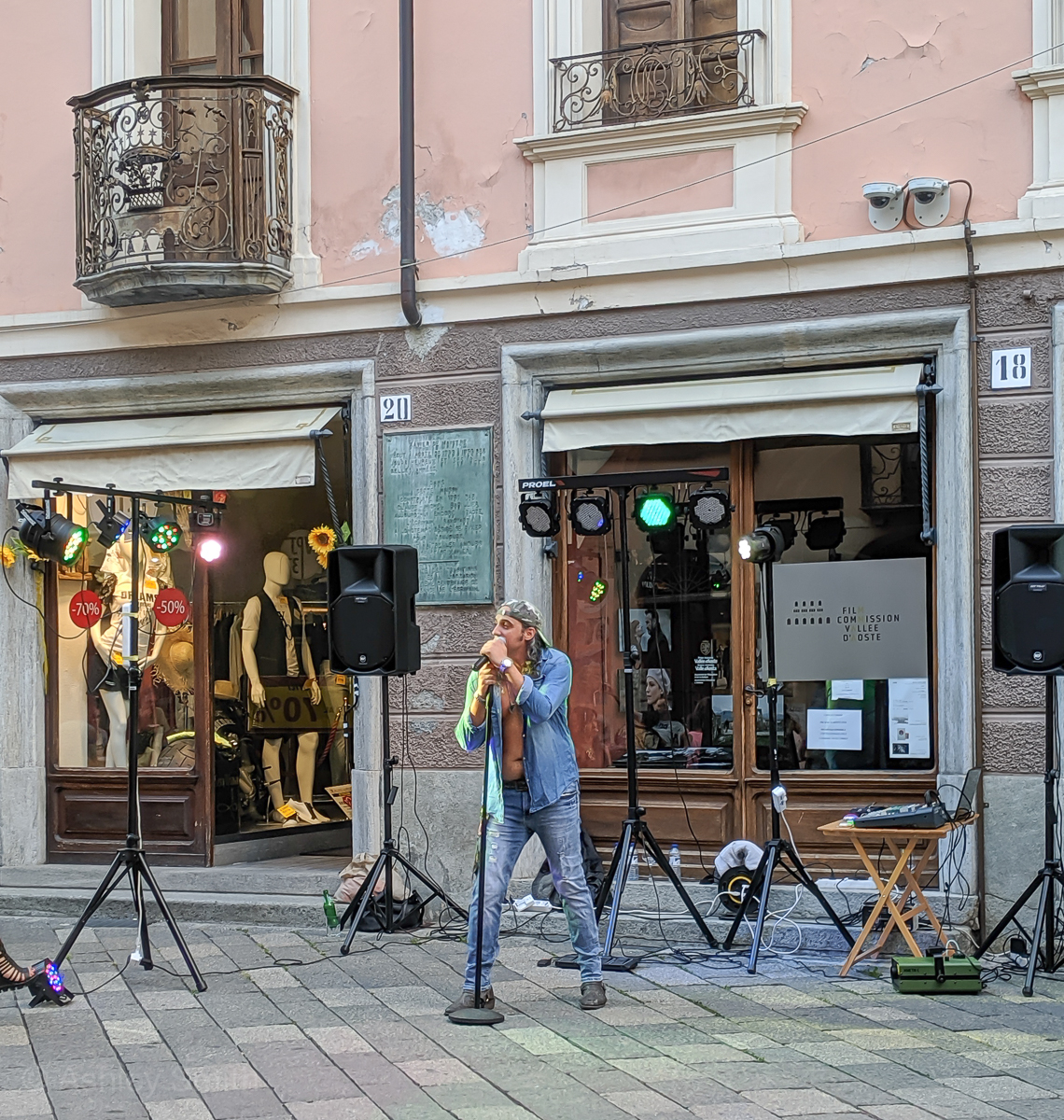
Piazza Émile Chanoux
During your 1 day in Aosta, you must spend some time in and around Piazza Émile Chanoux–Aosta’s main square. There are shops and monuments here and, when I visited in August, an absolutely massive board game festival going on. Witnessing this, and the city-wide scavenger hunt, was awesome to experience as an outsider.
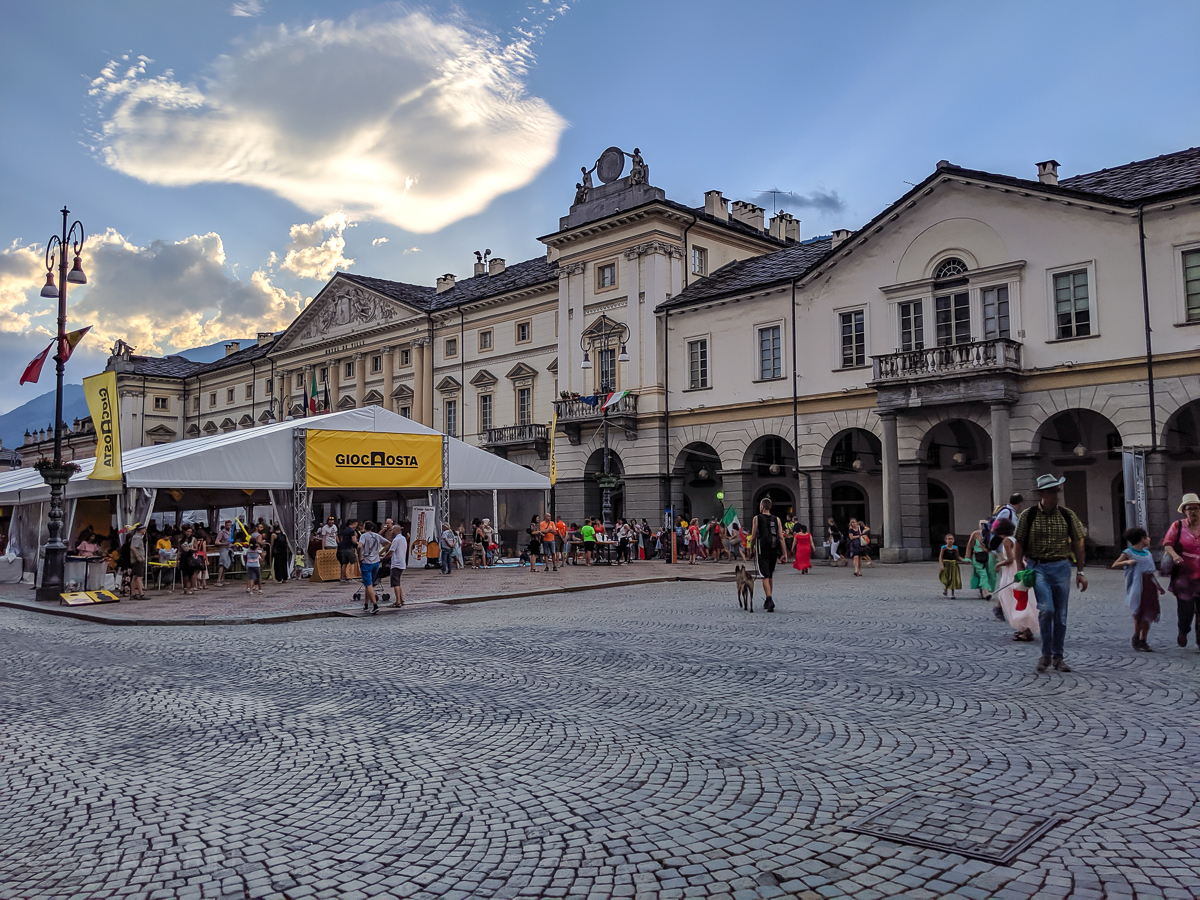
Where to eat in Aosta
Being part Italian and part French, you don’t have to worry about finding amazing food in Aosta. Here are a few places I personally enjoyed:

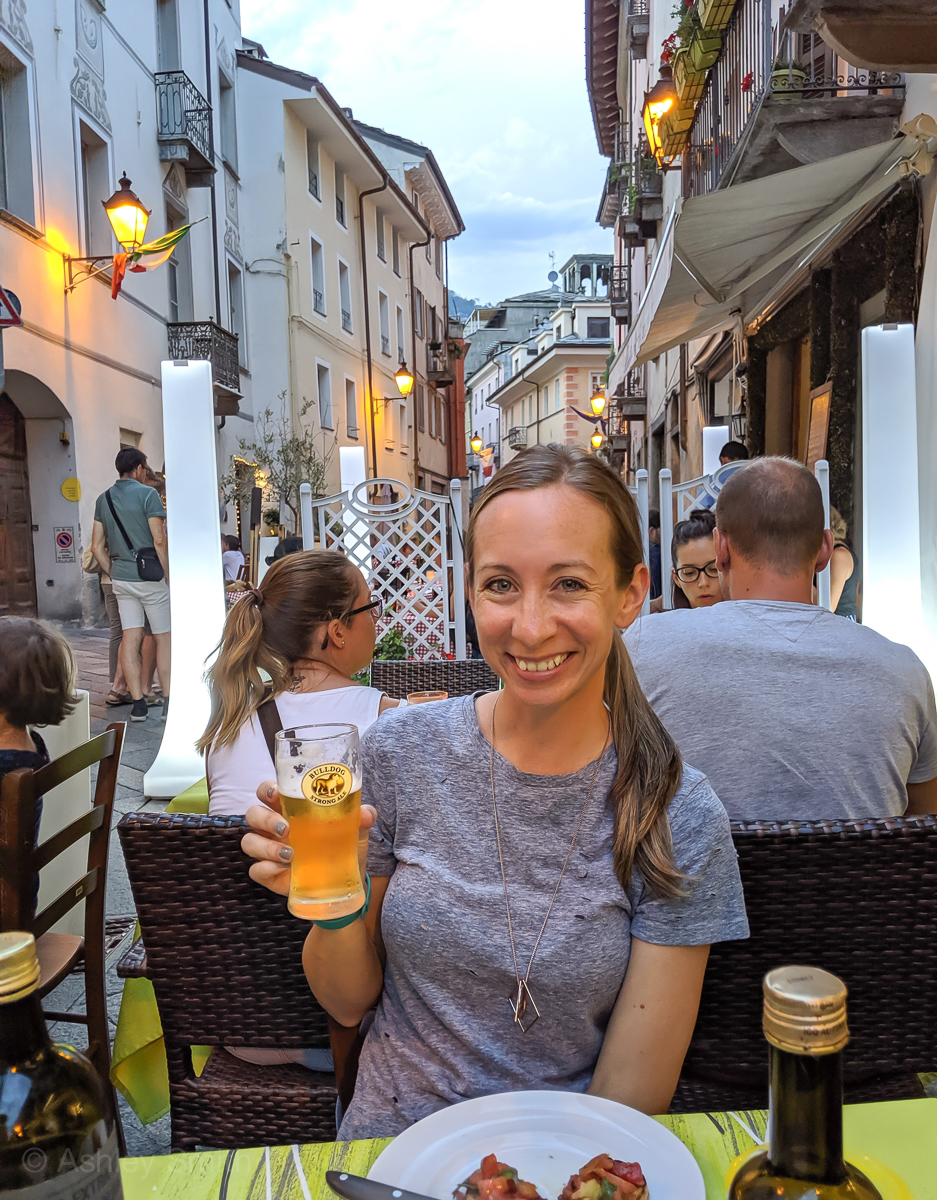
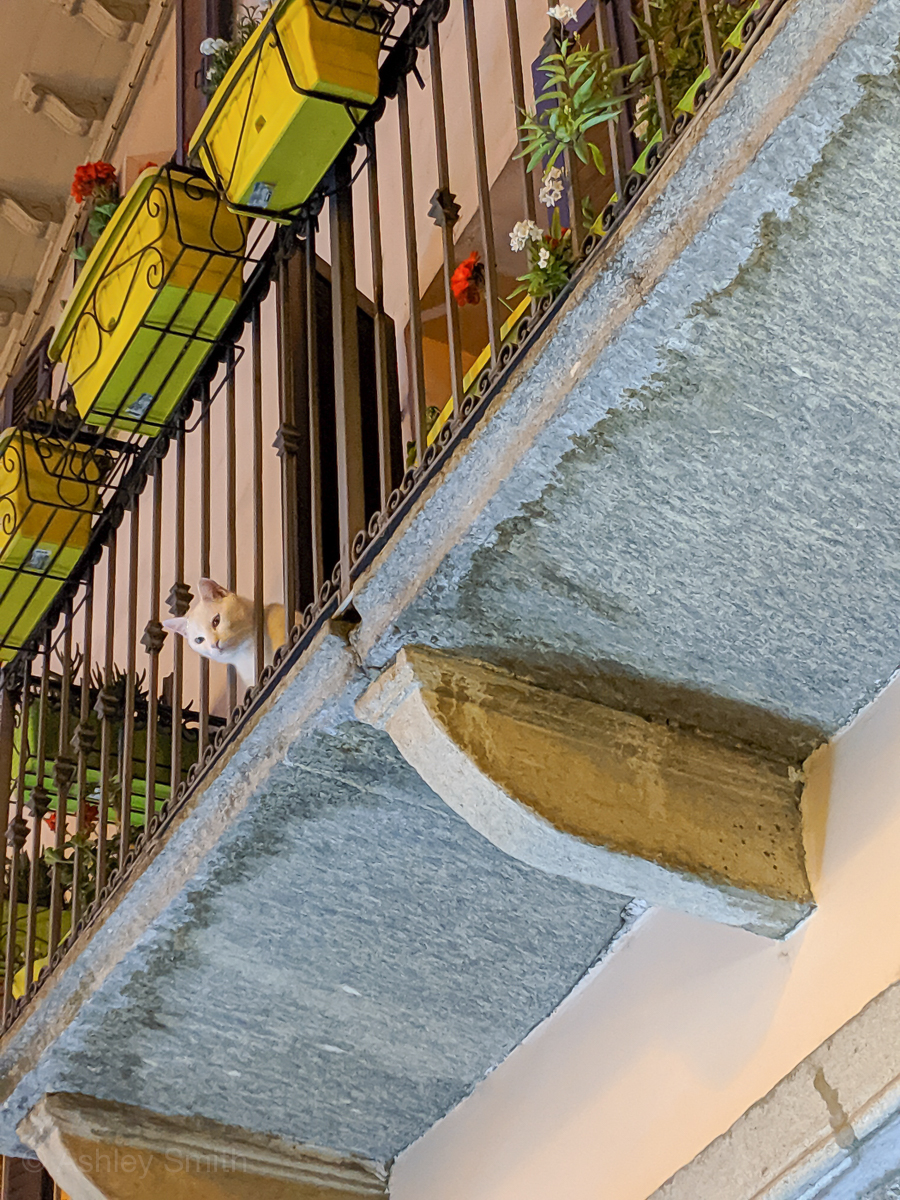

Delicious Aosta tours
If you’d prefer to eat your way around the city during your 1 day in Aosta (or however long you’re visiting), there are some very cool options for that. Check out these popular Aosta food tours:
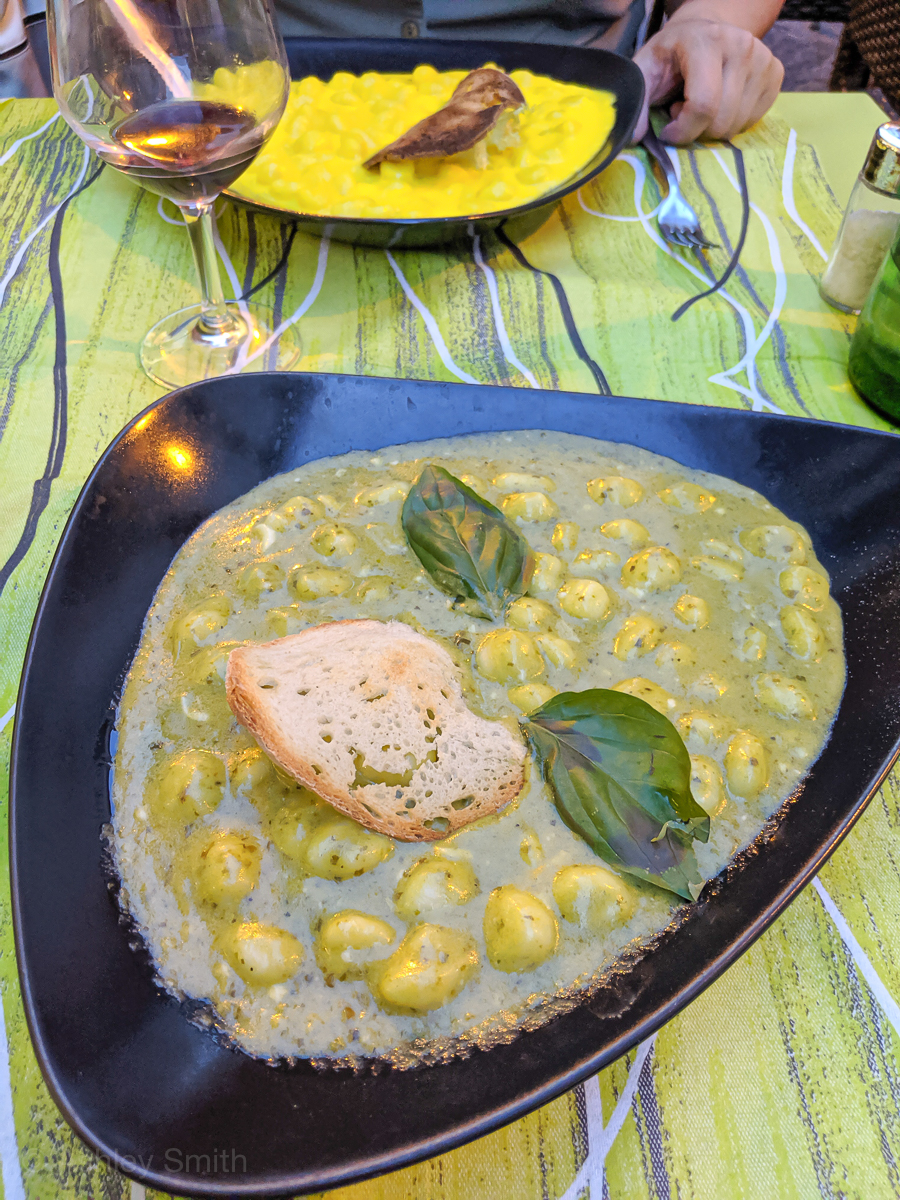

Where to stay during your 1 day in Aosta
Though a day trip to Aosta is perfectly doable from neighboring cities like Courmayeur or Turin (Torino), I highly recommend spending the night so you can fully enjoy Aosta in the evening as well. If you’ve spent any time in Italy at all, you know the small towns really come alive (and the shirts come unbuttoned) after the sun goes down. Here are a few great places to stay in Aosta:
You can see all available Aosta hotels here; and there are lots of rental properties here too.
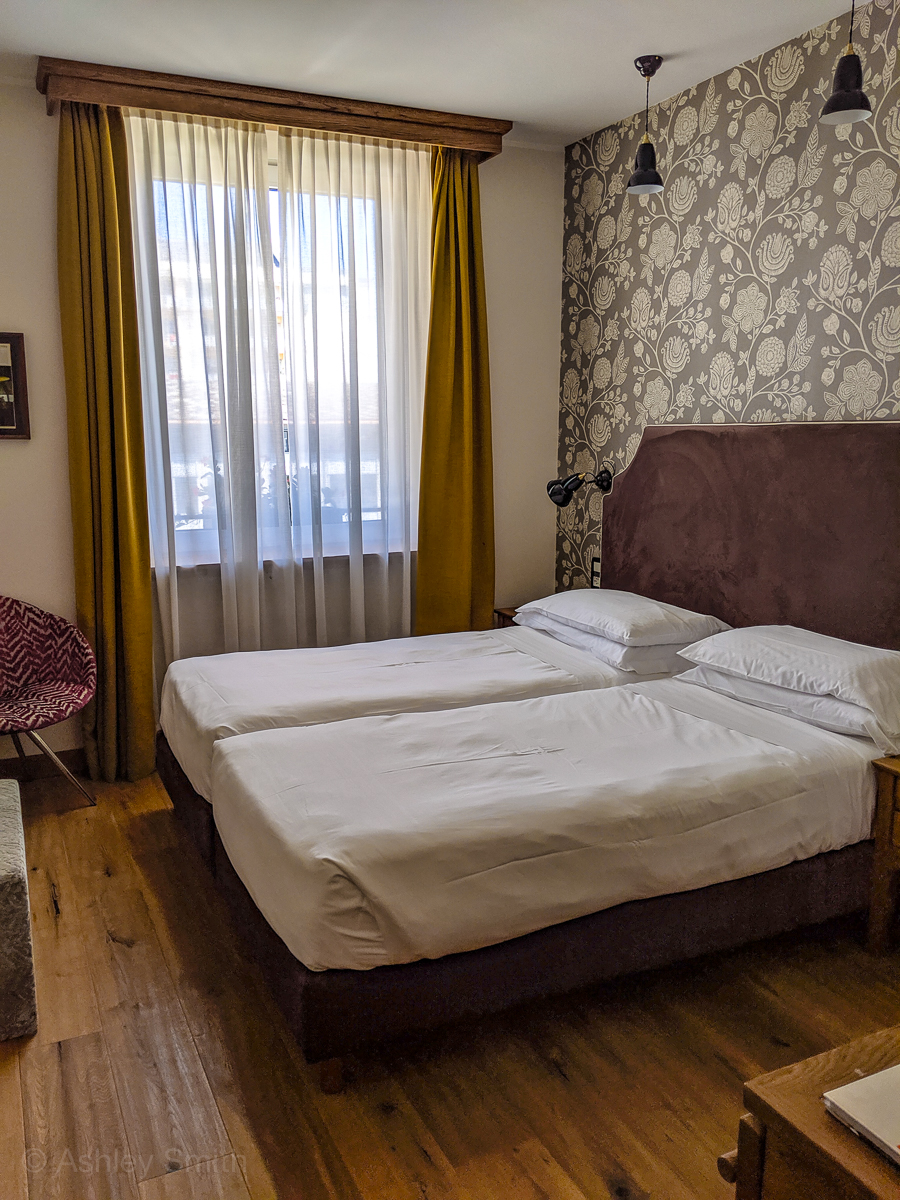
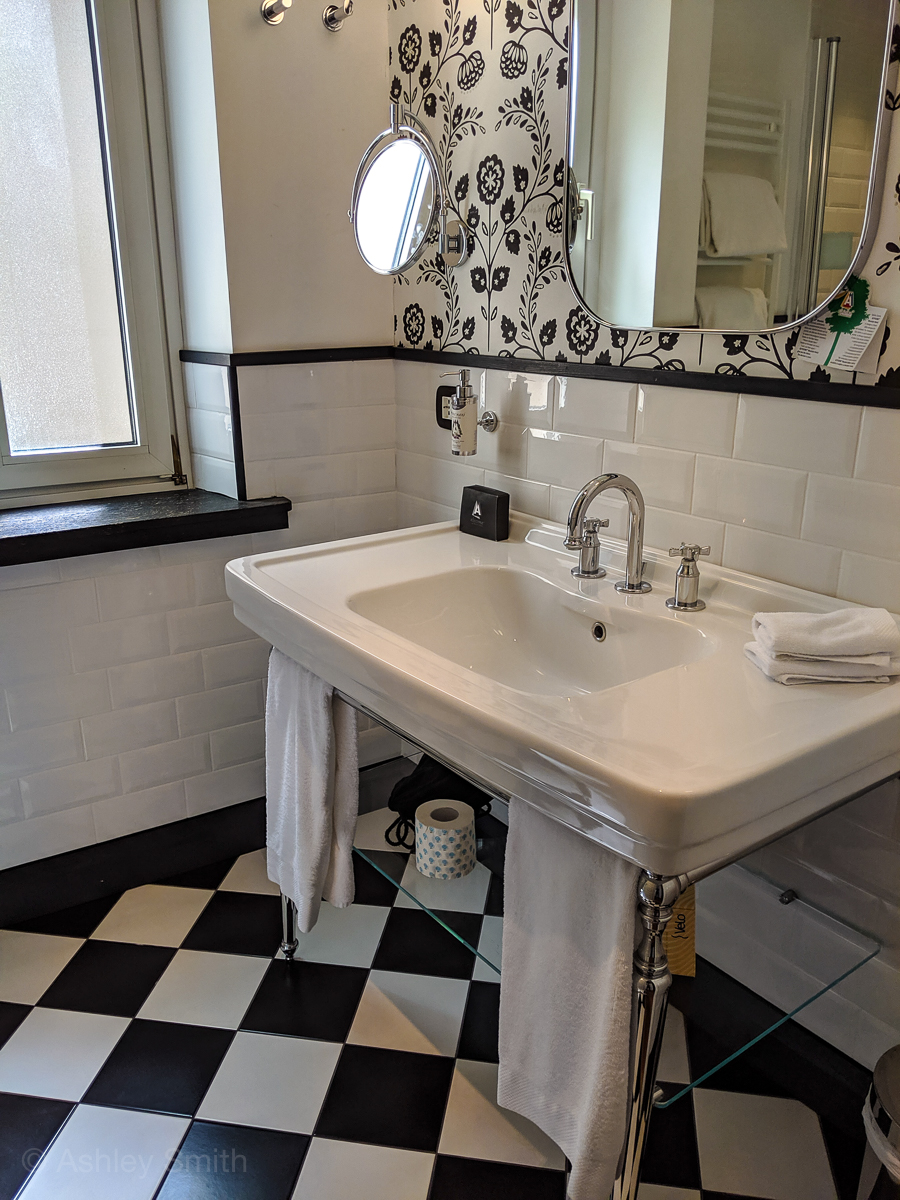
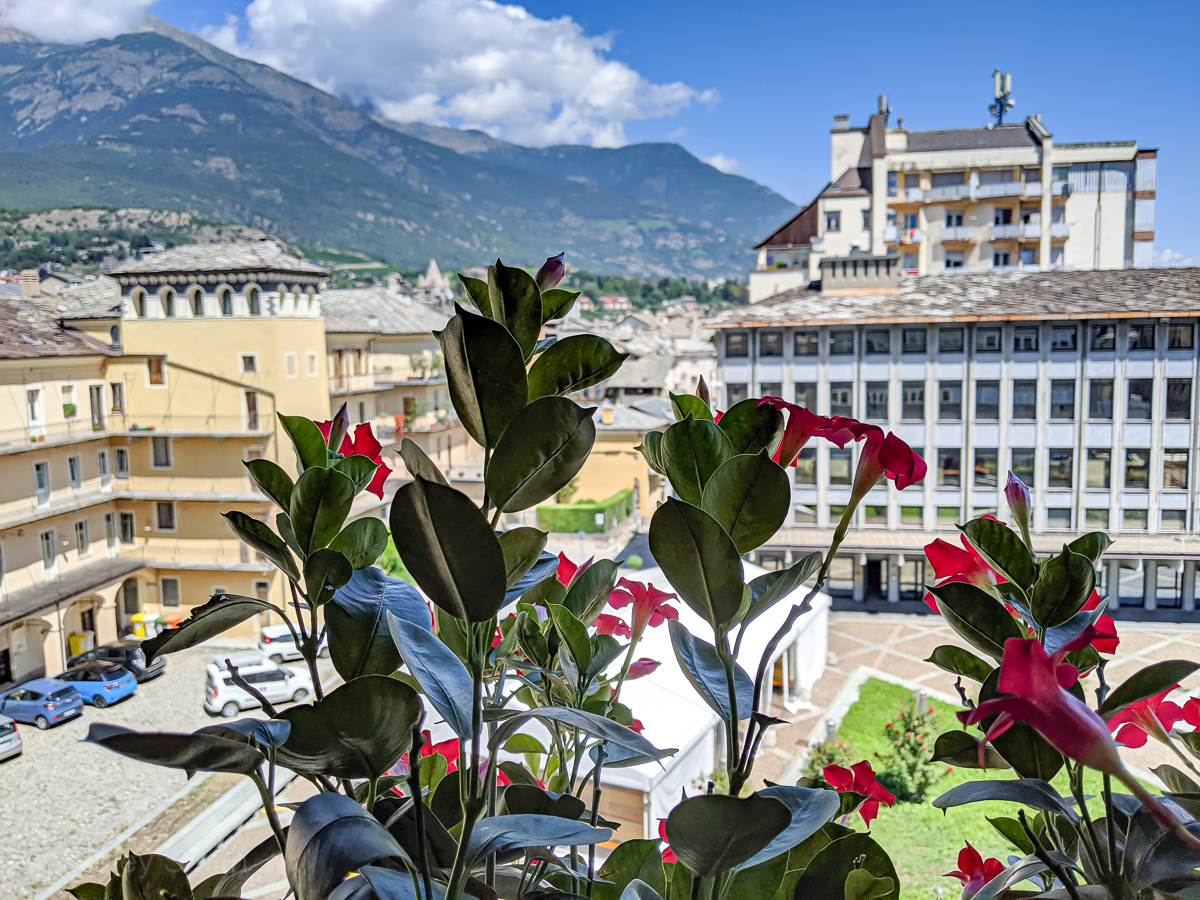
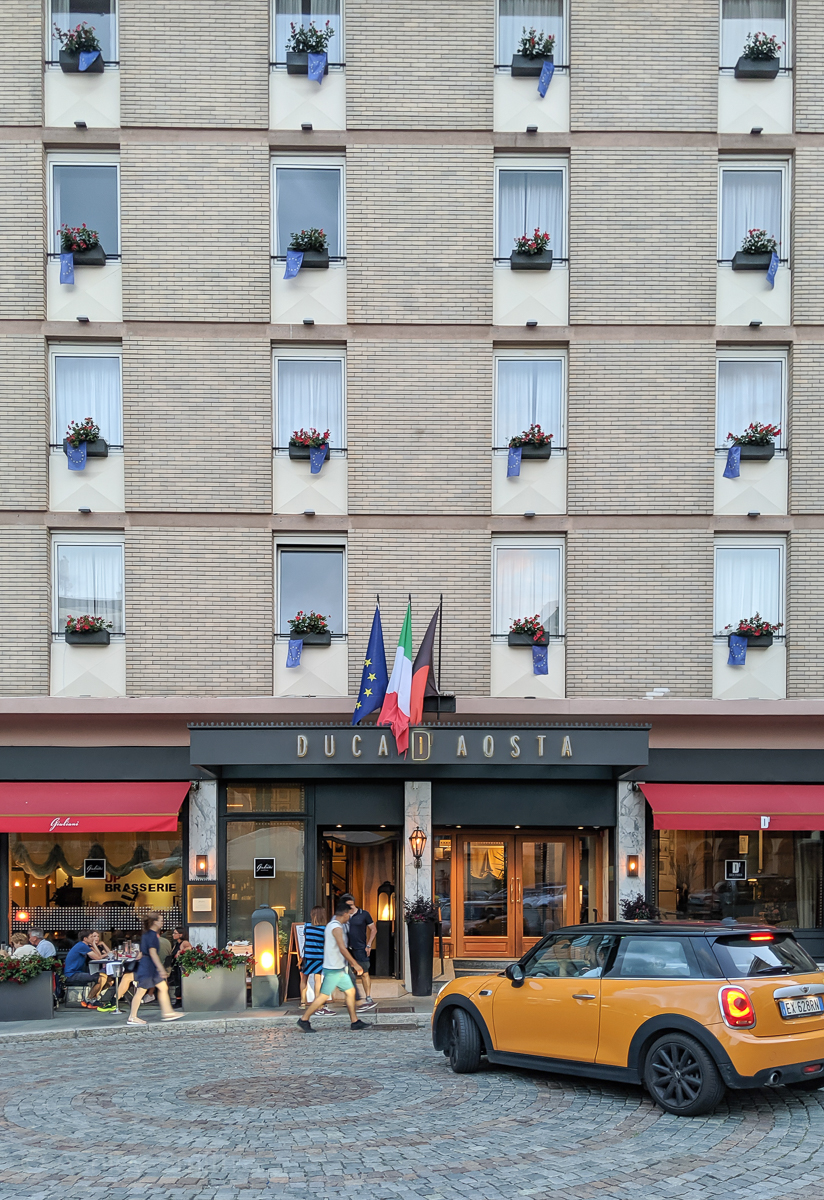
More info for your trip to Italy
Like this post? Have questions about spending 1 day in Aosta? Let me know in the comments below. Have fun in Italy!

Save this info, pin these images:
